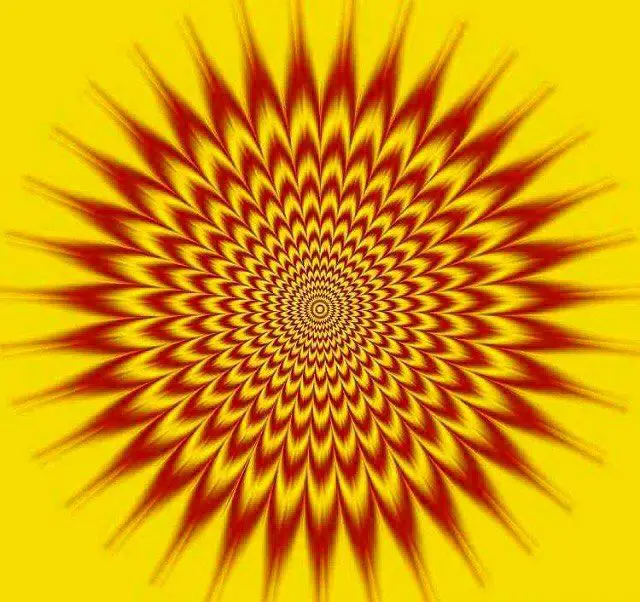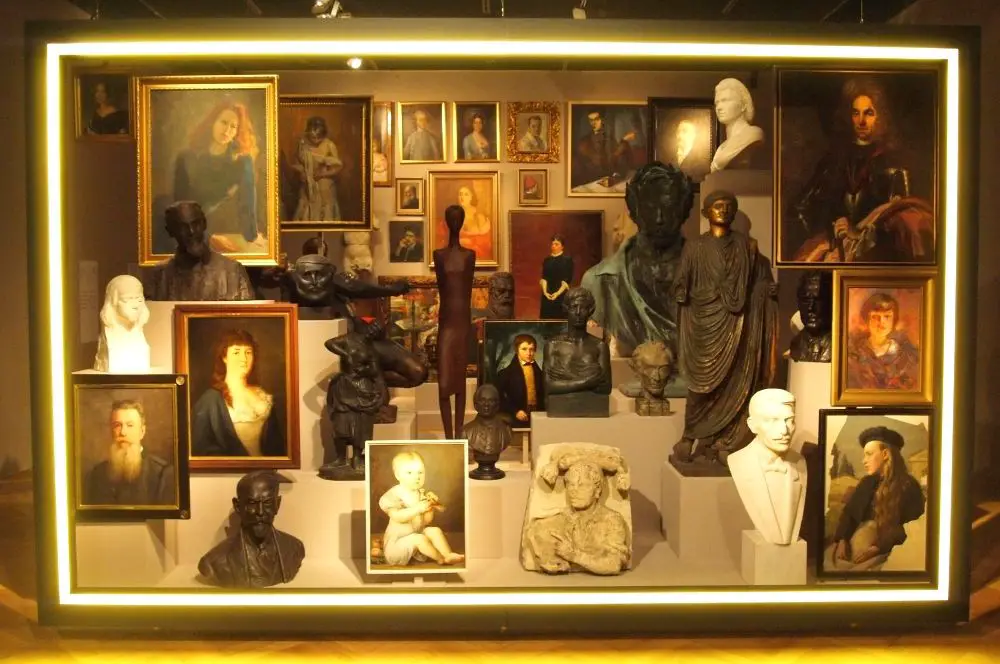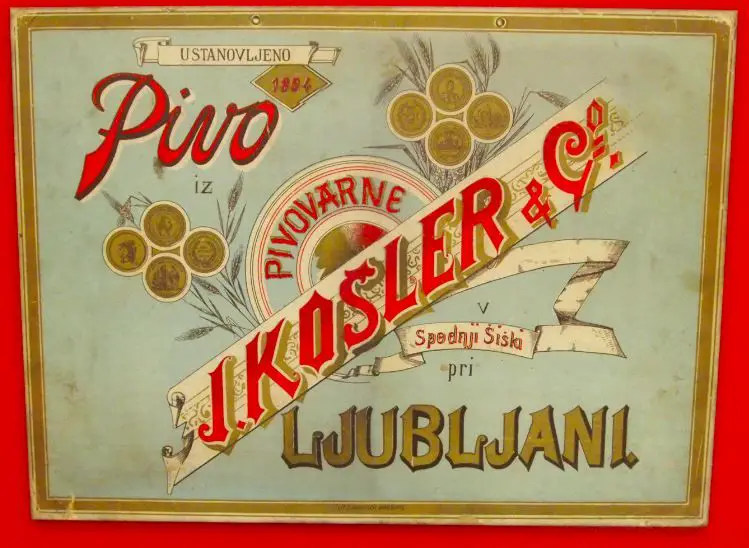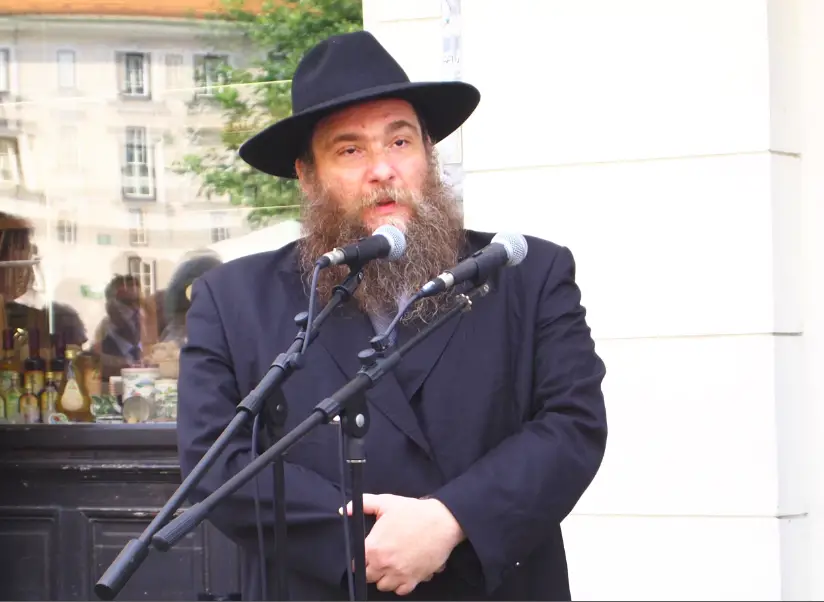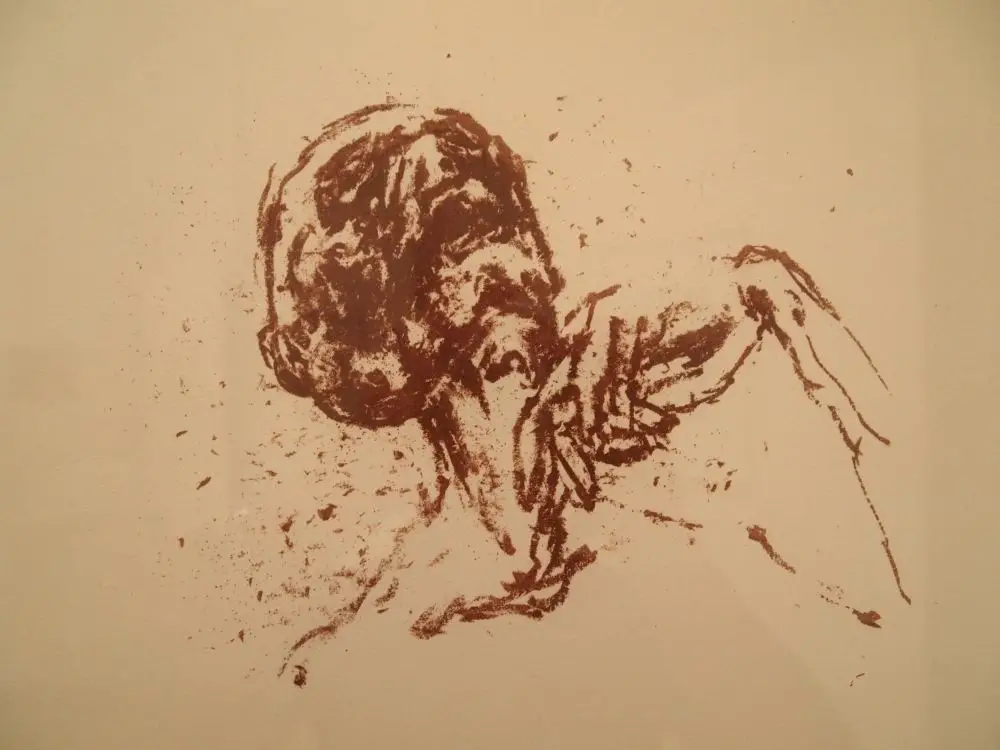Lifestyle
"What are you doing?"
Kate was wondering why I was staring at the sidewalk as we sipped wine at Zvezda on Congress Square.
"That strawberry," I told her, likely slipped off someone's dessert at the cafe. I said I was calculating how long it would be before it was stepped on in the summertime, near-constant pedestrian stream. Given fastidious and careful-stepping Slovenes, I figured it stood a good chance of remaining intact.
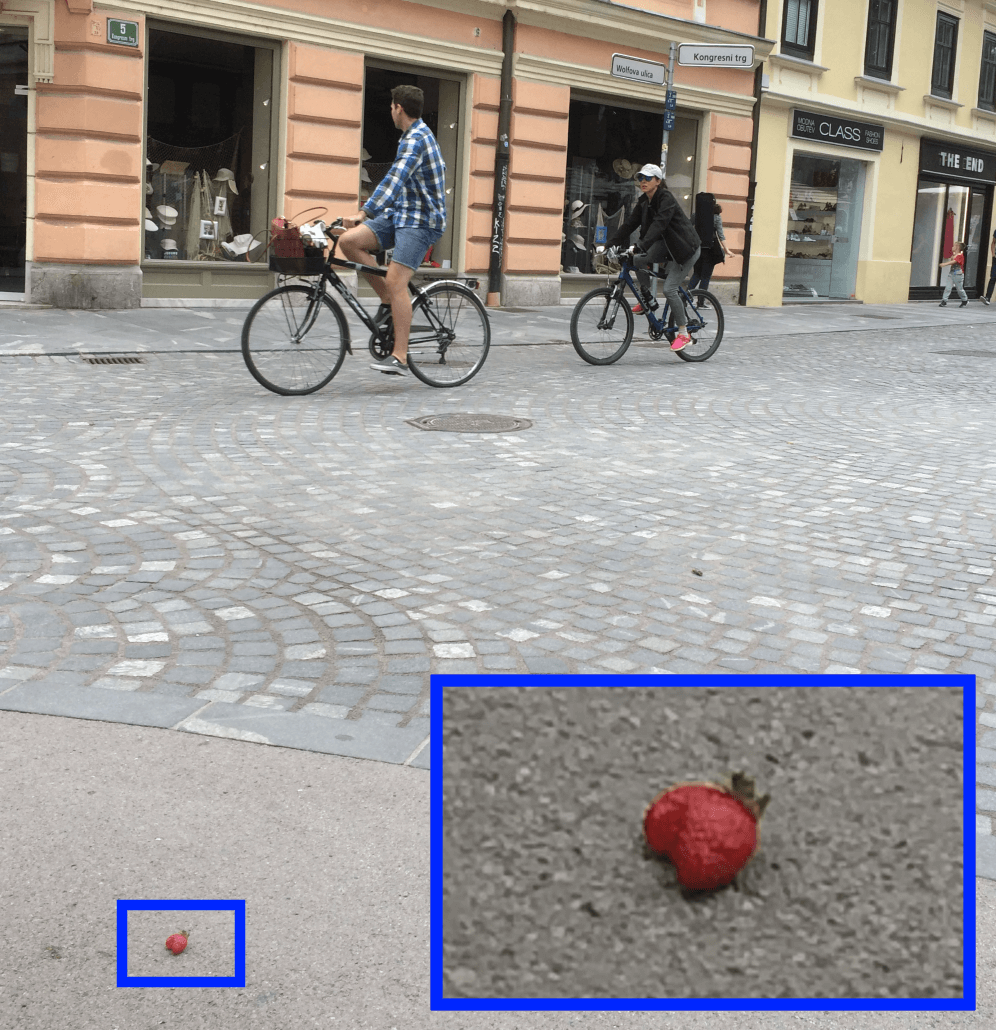
The berry in question
The strawberry scene unfolded during our most recent Ljubljana sojourn, an intermittent story that began in 1991. Tank traps, troops and tension we saw back then at Congress Square, across from Zvezda, are long gone, replaced by the EU, the Euro and stability.
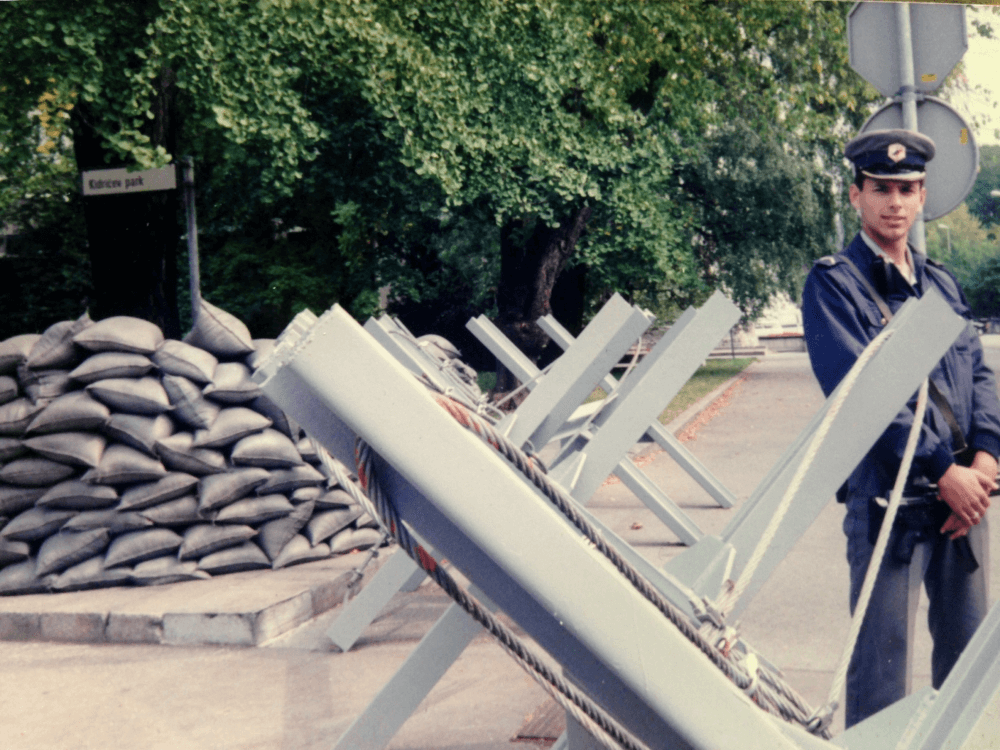
Tank traps in Congress Square, 1991 (Kongresni trg)
Slovenia, mostly unknown then, is now a world destination, attracting ever-growing numbers of visitors, to Bled, Ljubljana, and a slice of the Adriatic. But we worried on this trip, perhaps even facing the dismal prospect of being overwhelmed.
In 1997, I returned to study Slovene, and saw some early changes. In my notebook, I fretted then whether Slovenia could "survive the onslaught of western 'civilization,'" EU membership, and maintain historic links to the Balkans, and their once-fellow Yugoslav citizens. The "fragile beauty and rhythm of the 'club'," which I felt strongly in cozy Ljubljana, could be easily shattered, I wrote, two decades ago.
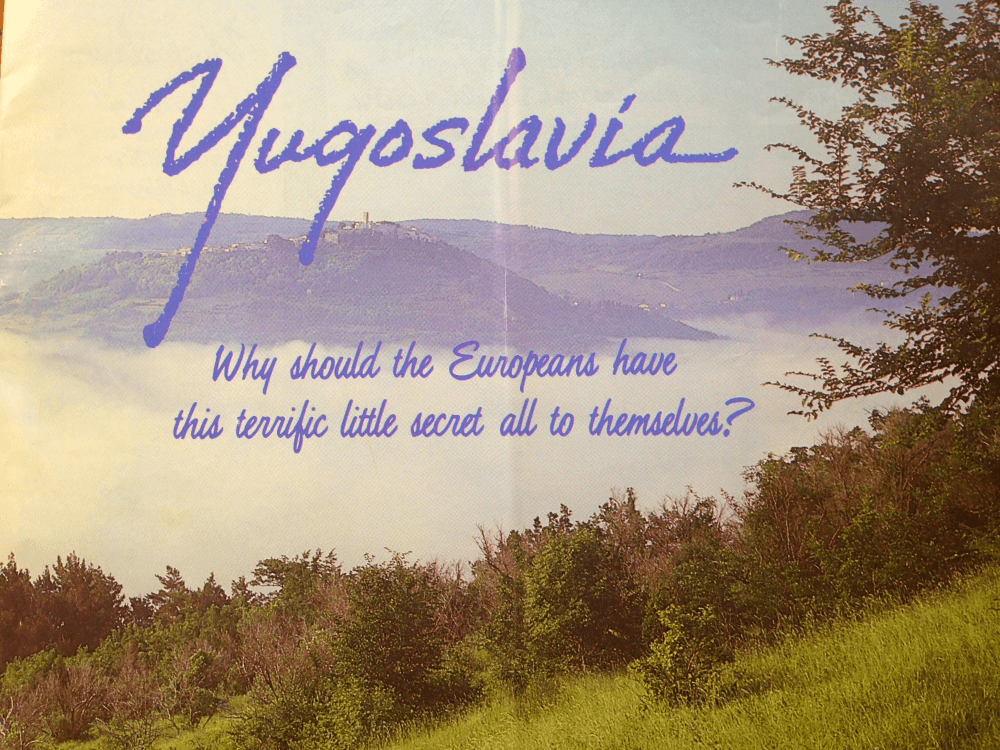
A time before "I feel Slovenia" - "Why should the Europeans have this terrific little secet all to themselves?"
Now, with Slovenia on the map, that seductive "I Feel Slovenia" slogan has worked all too well, no need to be lured. (It came as little surprise that as I finished writing this, Slovenia announced record tourist visits in 2018.) But what is the breaking point? Does a Venice or Amsterdam loom for Ljubljana, and maybe Slovenia, inundated by tourist waves, upending what they had come to experience?
This year, we came in June for three months, my first time as a citizen of Slovenia. Citizenship in the "old country" had always seemed like a crazy pipe dream. But in 2014 I applied, assembling roots records, my multiple newspaper accounts about our repeated visits, and assisted by a Ljubljana friend, a retired lawyer.
All four of my grandparents — John Puc and Johanna Starman, and John Krze and Frances Lustick — migrated a century-plus ago to Rock Springs, an unlikely multi-ethnic, coal-mining town in the high, cold desert of southern Wyoming USA, where I grew up in a sort-of Slovenian enclave. My mother made potica, we bought kisla repa from another family, and kranjska klobasa made by a Slovenian guy who also operated a highway motel. We never missed the yearly "grape festival" at the Slovenski Dom, and one fall Sunday everyone in the family joined my blacksmith grandfather in his basement to grind grapes, shipped to local Slovenes from California.
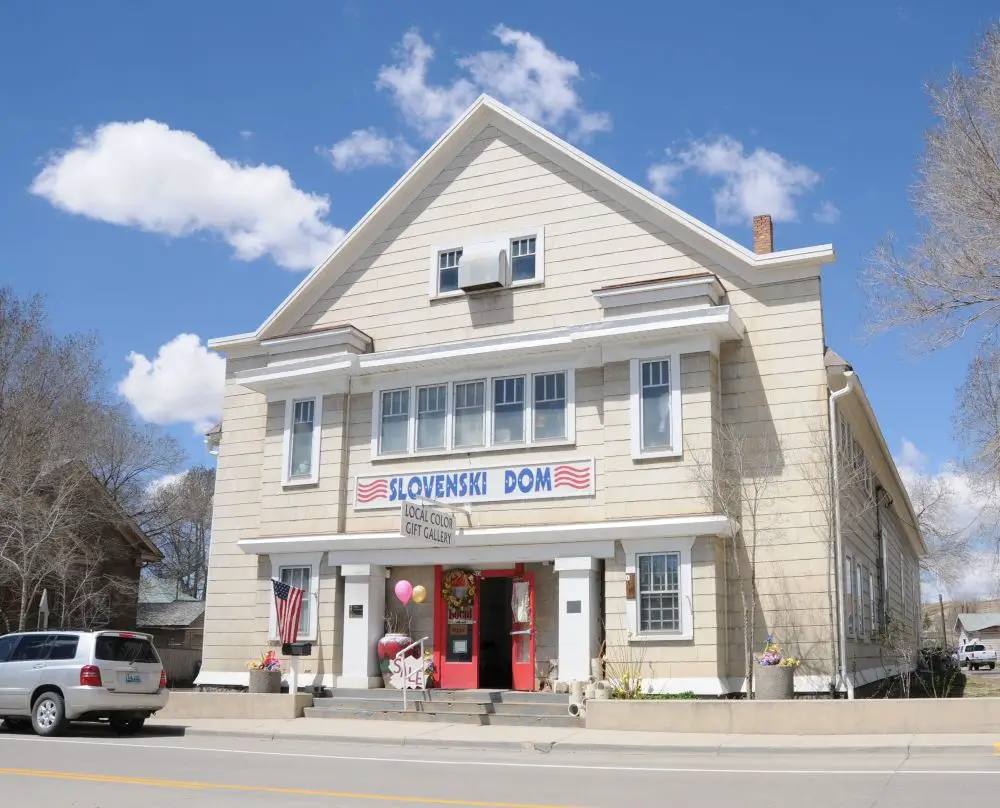
Slovenski Dom, Rock Springs, Wyoming, in 2011. Photo: Yurivict, GNU Free Documentation License
I wrote in my application that I considered citizenship to be fulfilling the dream of one of my grandmothers, who never learned English, always feeling, or so I thought, that one day she'd return to her beloved green Slovenia, leaving that dusty Wyoming desert behind.
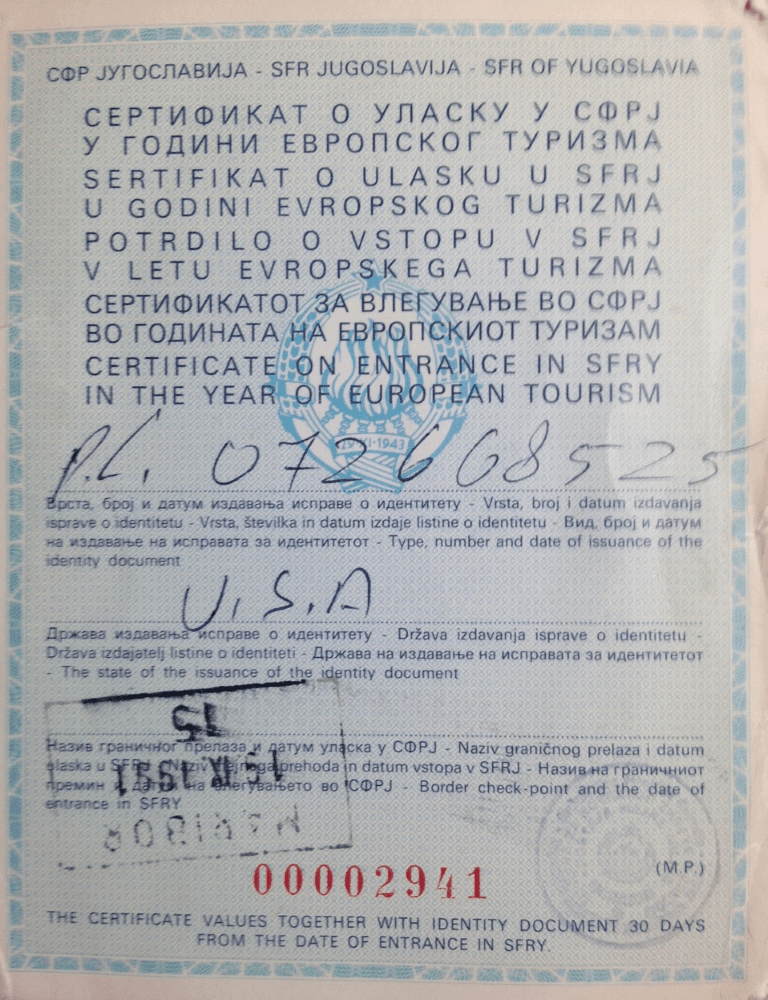
Travel documents from 1991
Back in early 1991, when we had planned our first visit, it was still Yugoslavia. But when we arrived in September, although border guards were handing out SFRY (Socialist Federal Republic of Yugoslavia) "certificates" for travel, almost overnight it had become Slovenia. Despite independence, there was uneasiness. Our friend Stanislav Fortuna stashed gas masks under the couch, at the ready. By the Triple Bridge, currency sellers hawked newly minted Slovenian tolars, beneath Prešeren's statue. The old-line department store, Centromerkur, was still in business (that's where we purchased material Kate only recently used to make kitchen curtains in Albuquerque, New Mexico, where we now reside in the USA). Titova Cesta, the main drag, was virtually empty late nights.
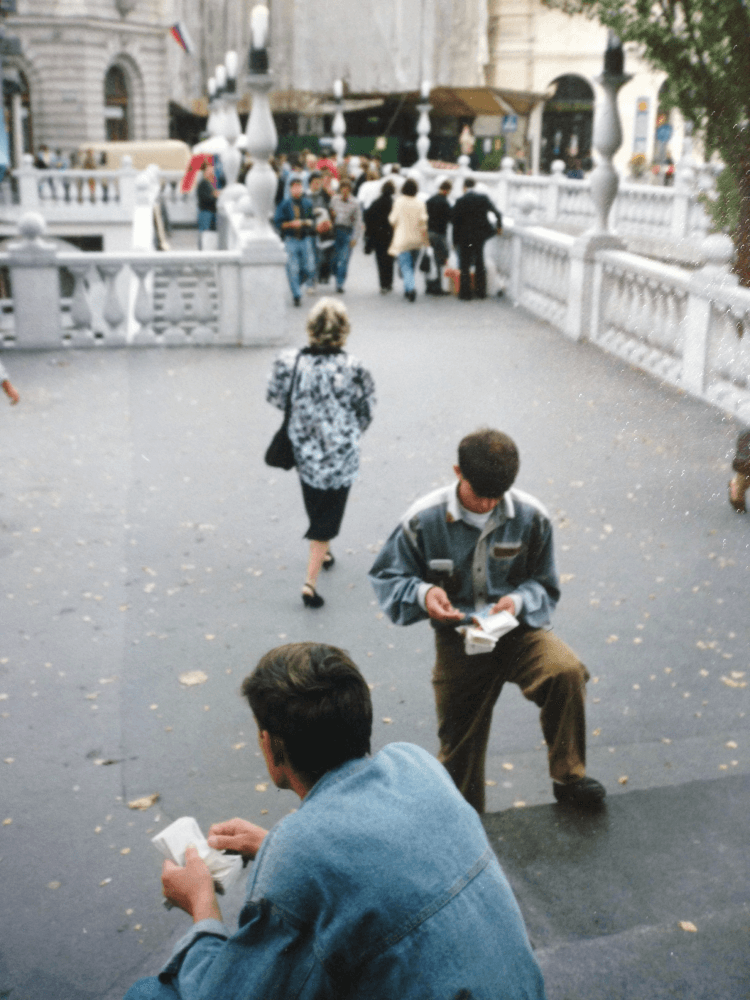
Currency sellers in Prešeren, 1991
That's all a distant memory. Centromerkur has vanished, replaced by the trendy Galerija Emporium. No longer is curtain material made in Slovenia, — no, our seller told us this year — all textiles are from Italy.
On the streets of Ljubljana, meanwhile, a more significant change: Increasingly more, and swifter, cars. Vehicle swarms unnerve bicyclists on narrow roadway bike lanes, so they opt for sidewalks. I call it "outsourcing danger," squeezing hapless pedestrians, forced to watch for oncoming and approaching bikes (and even motorcycles!) on what were sidewalks supposedly reserved for walkers. POZOR! That became our byword as pedestrians, which we are because we prefer foot, bus or train.
Bicyclists have also become more aggressive. They no longer "behave normally," Stanislav says. He's been riding bikes for nearly seven decades, he says, but now feels uncomfortable on the increasingly fast-paced streets.
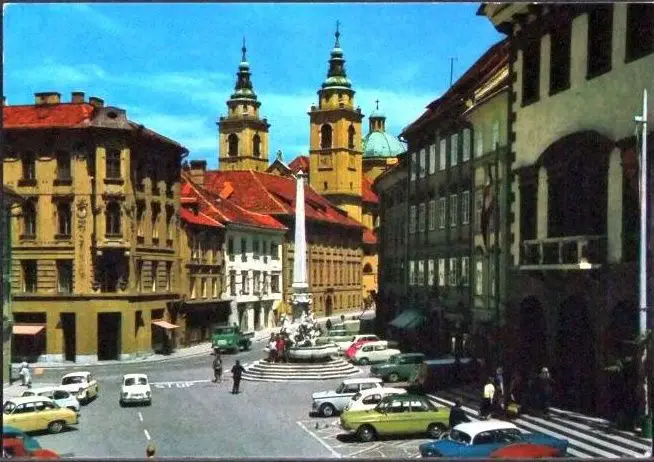
Postcard of Town Square, 1969. Wikimedia, public domain
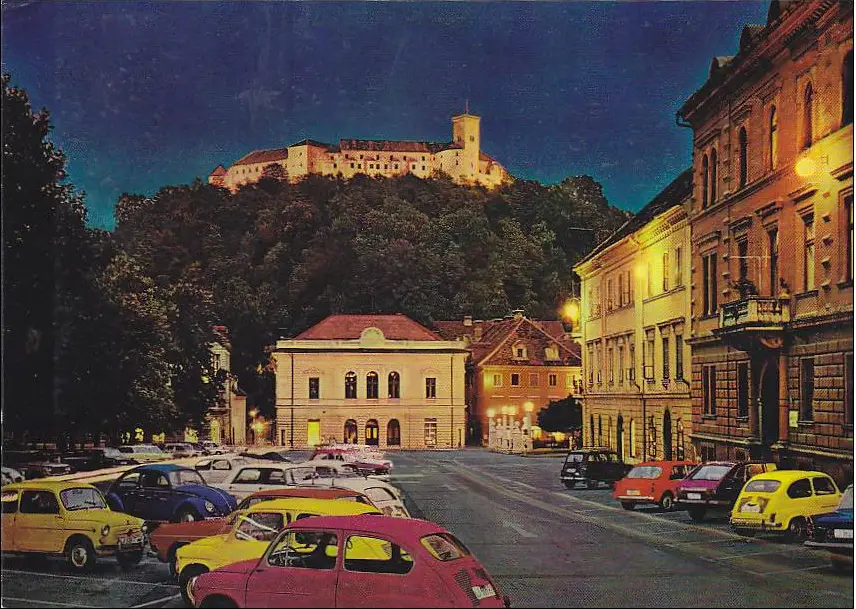
Postcard of Congress Square, 1969. Wikimedia, public domain
Also, less cars! It's a delight to walk the Triple Bridge, passed Prešeren, without dodging smoking autos and lumbering buses, the way we saw it in 1991. Tito's name has been scratched, and now Slovenska Cesta is off-limits to cars (mostly), for buses and walkers only. Now that's a refreshing change, promoting pedestrianism.
But bigger, better, faster — an unsavory USA import — has, alas, afflicted Ljubljana. Thankfully, pedestrian markings on streets still stop cars, though it's smart to glance left and right, just to be sure.
Surprisingly, there was little mention of Melania Trump, the Slovenian-born export to the USA, who left for bigger things and bright New York lights. The one-page In Your Pocket Guide writeup on Sevnica, her birthplace, doesn't even mention her. The only signs of Melania we saw were "first lady" products, tagged to fend off lawsuits she's filed to protect her name.
On the housing front, other changes. When I arrived in 1997 for language study, only three private rooms were for rent, one on Friskovec, where I stayed until relocating to a student dorm near Bezigrad. Now, hostels, hotels and Airbnbs abound, even in Mestni Trg, all of this giving neighborhoods a less-permanent feel.
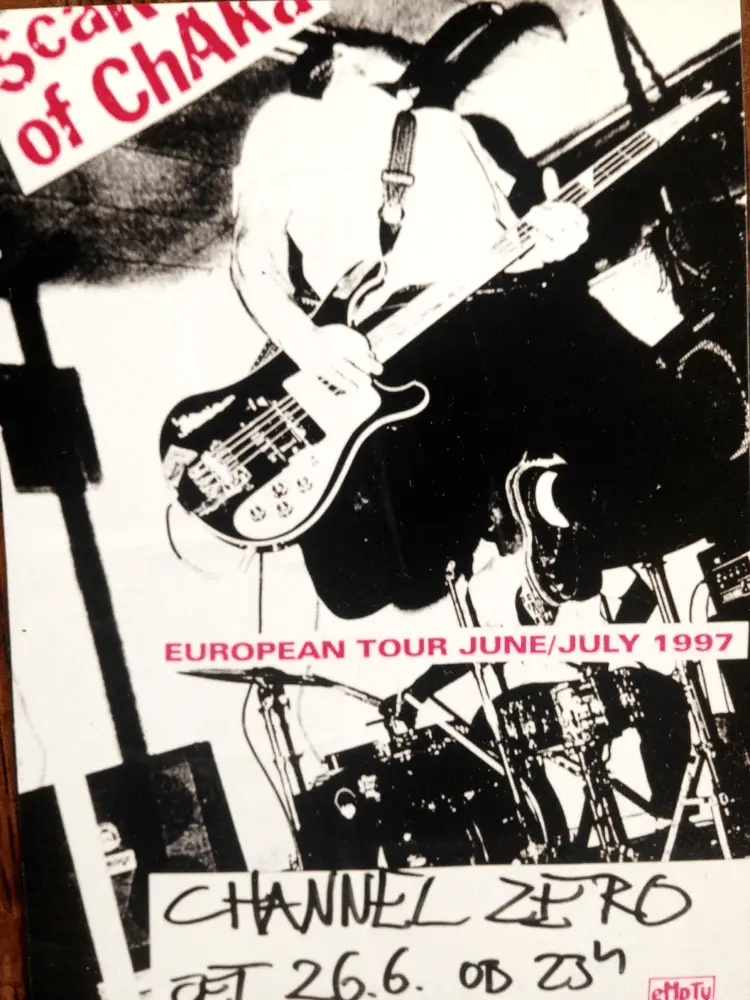
It was when I was at Friskovec that I found Metelkova, in its early raw stages, a time of honest energy and creativity. One late night I heard drums, and wondered what was up behind the walls on the street. The next night, I found out, through a newly opened hole, and happened upon Channel Zero, and a punk band passing through — Scared of Chaka, coincidentally, from Albuquerque, USA. I'm from Wyoming, I told a shocked Dave Hernandez, the band's frontman, who later formed a more widely popular USA band, The Shins.
A 2018 whirl through Metelkova left us feeling differently. Recent fires, a spat of sleazy characters milling about and police wandering around offered a different vibe. At Celica — an abandoned prison in 1997 — cordialness lingered, though one worker lamented that with the takeover by the company managing the Castle, a more mainstream and profit-oriented operation loomed.
Related: Celica - Former Prison, Hostel, & Full Artistic Experience in Ljubljana’s Metelkova
Down by Prešeren, other changes. By August, swelling tourist crowds intent on discovering "Europe's best-kept secret" noticeably thickened, at Trubarjeva, the Triple Bridge and the dragons. The crowded frenzy, unlike the 1990s and even latter-years Ljubljana, was amplified by street performers — a non-local mishmash of maddening, out-of-place bongos, incessant mandolins and disruptive break dancers. We longed for the Romani band that frequented the bridges, in 2014 and 2015, to feel that real Balkan beat, and felt sorry for the drowned-out, lone Slovenian accordionists cast into the sonic shadows.
To experience old-country spirit and heart, we left Ljubljana, for the out-of-the-way. By pure chance, we had met Sonja Bezjak at Carlos Pascual's "Pocket Teater." Even more fortunately, her home was near the Mura River in little-touristed northeast Slovenia, a region Kate by coincidence was reading about in Feri Lainscek's novel, Murisa.
Related: Slovenia's Foreign Entrepreneurs: Carlos Pascual, Working Writer
We drove with her to Ljutomer, where Slovenian language blossomed. Then, to Trate, her home, near an aging castle that housed mental patients where she and other volunteers established a "museum of madness," to focus on perceptions of mental health. We floated the Mura, and met stalwart river-protectors fending off misguided hydropower developers, an effort that's succeeded in getting UNESCO status for the river ecosystem.
Sonja's parents prepared a garden-fresh vegetable dinner, evoking that Slovenia past now receding all too quickly. It was all like a dream, I told them, recalling my grandparents' kitchen table in Rock Springs, my grandmother making lunch for my grandfather who walked from his blacksmith shop.
We returned, and lingered a bit longer in Ljubljana, lamenting our impending departure. One of our last stops was at Zvezda, and my strawberry watch. Alas, fate finally intervened. I glanced away for a moment, and when I looked back, the berry was smashed on the sidewalk.
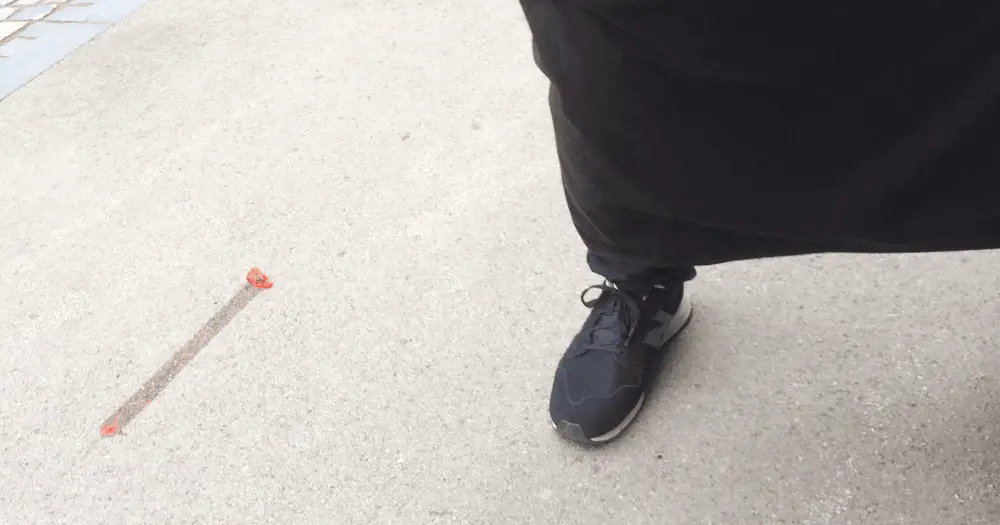
I recalled my sort-of life mantra — nothing, no matter how delicious and wonderful, lasts forever. Likewise, it may be, to our dismay, and my grandmother's dream genes, the way of Ljubljana, and Slovenia. Perhaps I'm wrong, and anyway we're still coming back, to savor ambiance of the "club," deep friendships, and drink from that well of wonderfulness, while we can. But I think I'll just stop telling folks what a swell place it is, lest they may actually all come, eroding our pleasantness.
If there’s a story you’d like to share about Slovenia, then please get in touch at This email address is being protected from spambots. You need JavaScript enabled to view it.
STA, 7 January 2019 - Road accidents in Slovenia last year resulted in a total of 92 deaths, which is 12% less than in the year before, when the number of recorded deaths on roads was the lowest in the last 60 years. Last year the number was actually below 100 for the first time ever on record.
Presenting the statistics on Monday, the Infrastructure Ministry noted that Slovenia was among the EU countries where traffic safety had improved the most in recent years.
The ministry, which will present the statistics in more detail at a press conference on Thursday, added that the number of people who sustained serious injuries in traffic accidents had also dropped last year to below 800.
Only in 1990 Slovenians roads claimed more than 500 lives, as well as in 1994, after which the number of road casualties started to decline gradually, to drop below 300 for the first time in 2001.
The number dropped below 200 for the first time in 2009, when the motorway network saw a major expansion and road toll stickers were introduced, while the number neared 100 in 2017, when a total of 104 casualties were recorded.
Infrastructure Minister Alenka Bratušek said that despite the positive trends, these numbers should not be perceived as satisfactory, as both individuals and state institutions could do more for traffic safety.
Our goal must be a minimum number of road victims, and Slovenia should look up to countries like Sweden, which has no more than 25 deaths on roads per million people, as well as the UK, Netherlands and Estonia.
Four persons have already lost their lives on Slovenian roads in 2019, including two today alone in a severe accident near Kočevske Poljane in south-eastern Slovenia.
All our stories tagged statistics can be found here
January 7, 2019
The administrative court suspended the implementation of the decree on the removal of brown bears from nature, which the government endorsed at the end of last November. According to the decree, 200 bears were planned to be taken out of Slovenian forests. Among these, 175 were supposed to be shot, while the remaining 25 were expected to die due to accidents or other causes.
Related: Brown bear photography in Slovenia
In December, the environmental protection organisation Alpe Adria Green (AAG) brought an action against the decree and a request for an interim injunction. The group is convinced that the decree violates the Nature Conservation Act, the Habitats Directive and the Constitution. The AAG noted that the government endorsed the decree despite numerous complaints on its drafting, and that the Ministry of Environment and Spatial Planning did not answer the requests for an explanation as to why such a number of bears had to be removed from nature. At the same time, the AAG expressed its expectation that the decree will also be annulled.
This is not the first time that the court has intervened in the destiny of large wildlife in Slovenia. The same decree that involves bears previously included eleven wolves to be taken out of nature, but after a public hearing the wolves were removed from the proposed cull. The Environmental Ministry took this decision after two judgments of the administrative court, which ruled that the reason for shooting the wolves, which was given as preventing the animals from killing livestock, and thus maintaining public acceptance of wolves, was not sufficiently substantiated.
All out stories about bears in Slovenia are here.
STA, 6 January 2019 - The Ministry of Labour, Family, Social Affairs and Equal Opportunities (Ministrstvo za delo, družino, socialne zadeve in enake možnosti) has issued a call to subsidise projects targeting dating violence and gender-based stereotype in a bid to promote gender equality.
In a national survey conducted in 2010 almost half of the women questioned reported having experienced psychological violence in relationship with their partners. One out of four (23%) reported being subject to physical violence and 7% said they experienced sexual violence.
Such violence often begins even before the partners move in together, so it is important to raise awareness and empower young people to recognise early warning signs such as when one of the partners tries to limit the other partner's contacts with friends or checks on her phone calls or text messages.
"Such form of violence is not talked about often enough and young people often have misconceptions about partnerships," the ministry said.
Related: Domestic violence remains common in Slovenia (feature)
One of the campaigns that deals in part to dating violence is Click-Off, an EU-subsidised project implemented since 2017 which has been raising awareness about online bullying of girls.
The ministry is also offering subsidies to projects helping boys to overcome gender-based stereotypes and social expectations about the role of women and men in society.
An international conference organised by the ministry in October for teachers heard how gender-based stereotypes are being fought in Finland and Iceland, calling for similar projects in Slovenia.
In a call open until 28 January, the ministry would like to encourage NGOs to address gender-based stereotype in the fields where they affect boys such as in deciding on their academic and professional careers or in how they perceive their role in a relationship.
The ministry is planning to subsidise at least five projects with up to EUR 10,000 each. The total available sum is estimated at roughly EUR 50,000.
The call is not aimed at research projects but rather at smaller projects conducted by NGOs for the first time. Experience has shown that such pilot projects are met with a good response among young people on the ground.
STA, 7 January 2019 - The business newspaper Finance speculates about real estate market trends in Slovenia in Monday's editorial, finding in a retrospective that the best time to buy property is over.
In the headline the paper quotes a real estate agent who says that he would have bought everything a few years ago had he known how the market was going to turn.
The paper notes that after a period of re-awakening prompted by favourable housing loans and banks' venturing into property auction lending, a period of "real-estate frenzy" followed.
One example is an auction of flats in the Savski Breg estate in the Ljubljana Črnuče borough [see map] in 2016 at which the most expensive item, a five-bedroom flat measuring more than 100 square metres plus a 30 square metre terrace and two parking places, was sold for EUR 180,000, VAT included.
A much smaller, 3.5-bedroom flat, on the same estate is listed for sale today at more than EUR 200,000, the paper notes, adding that the market will tell whether the price is realistic.
Related: Delo Reports on “the Short Colonisation of Soča Valley” By UK Buyers
"Looking back, the best time for buying real estate is over (...) But there is still demand, in particular for new apartments in the capital. This is part of the reason why many private investors have been announcing new housing projects."
The paper has calculated that about 1,500 new apartments will hit the Ljubljana market in a year or two.
However, the paper also calls for caution. "Warnings coming from business are not promising. Some are talking about the economy's cooling and the pessimists are even talking about a new crisis looming."
The paper says that market developments will depend on the price of loans and on whether people will still have jobs to repay loans.
It also notes that uncertainty may affect demand, advising extra caution to investors who say they will be offering buyers above-standard apartments, which it says will be the first that people will give up in case of a crisis.
All our stories tagged “real estate” are here
Launched on July 24, 2013, RTV Slovenia’s English language website has announced that it will stop releasing new content. The news comes after the state-owned broadcaster had published almost 8,000 stories in the last five and a half years, the archive of which can be found here.
The lights should be down by the end of the week, and as we work to get over the Christmas/New Year backlog there’s less time than we’d like to go out and have fun. But that doesn’t mean we haven’t looked ahead with some pleasure at the things we’ll be missing, able to skim the cultural life of the city with coffee or two from the warmth of a sofa, a pleasure we now hand on to you in the form of this multimedia guide to what’s on in Ljubljana next week (with past editions here).
As ever, clicking on the venue names in the list below should get you more details with regard to the time, price and location, as well as other events on at this place in whatever week you're here. Finally, if there's something you want to promote in a future edition of What's on in Ljubljana please get in touch with me at flanner(at)total-slovenia-news.com
Getting around Ljubljana
If you want to get a Ljubljana Tourist Card, which gives you travel on the city buses and entry to a lot of attractions, then you can read more about that here, and if you want to use the bike share system, as useful for visitors as it is for residents, then you can learn more by clicking this. Visitors with reduced mobility will be pleased to find that downtown Ljubljana is generally rated as good with regard to accessibility, and that there’s a free, city-sponsored app called Ljubljana by Wheelchair highlighting cafés, attractions and so on with ramps, disabled bathrooms and Eurokey facilities, which you can read about and download here. If you’re driving into town and don’t know where to part, our guide to how to park in Ljubljana is here.
Want / need cigarettes but the stores have closed? Here's an incomplete list of bars downtown that will satisfy your craving for the demon weed. While if you’re having trouble with the ATMs then here’s a guide to the Slovene you’ll see on screen. If you get a hangover then find out where to get paracetamol (and prescription drugs) in Ljubljana here, while details on emergency birth control can be found here.
Ljubljana is a small and relatively safe city, but if need to contact the police then there’s a special number for foreigners, and that’s 113.
Cinemas and films playing in Ljubljana this week
You can read about all the cinemas in town here, while a selection of what’s playing this week is below, and note that kid’s movies tend to be shown in dubbed versions, so do check before driving out to a multiplex and dropping off the young ones if they can't understand Slovene. That said, parents should pay attention to Kinobalon, which is Kinodvor's regular weekend series of film screenings and events for children, from babies on up, with special parent/child events, "first time in a cinema" screenings, and babysitting. Learn more about it here, and see the current schedule here.
Cankerjev dom – The Dutch movie Girl is playing here this week.
Kinodvor – The arts cinema not far from the train station is showing, among other features, The Old Man & The Gun, Den tid på året, Maria by Callas, Todos lo saben, Lady Bird (special rendez-vous with coffee and talk screenings) and The House That Jack Built.
Kinoteka – This revival cinema isn’t far from Kinodvor, at the train station end of Miklošičeva, is showing The Wrestler (Aronofsky), Last Tango in Paris (Bertolucci) as well as some Slovene and Yugoslav classics.
Kolosej - The multiplex out at BTC City Mall is playing all the big movies, which this week include The Grinch (with both subbed and dubbed versions), Fantastic Beasts: The Crimes of Grindelwald, Bohemian Rhapsody, Robin Hood, Johnny English 3, A Star is Born, Gajin svet, dubbed and subbed versions of Spider Man: Into the Spider-Verse, Aquaman, Bumblebee, a dubbed version of Asterix: Le secret de la potion magique, Second Act, Mortal Engines, Južni veter, and Mary Poppins Returns. The new releases this week are a dubbed version of Ralph Breaks the Internet: Wreck-It Ralph 2, and The Old Man & the Gun.
Komuna – The cinema in a basement behind Nama department store is showing Bohemian Rhapsody, a dubbed version of The Grinch, The Old Man & the Gun, and A Star is Born.
Clubbing in Ljubljana
Compared to some European capitals it can seem that nightlife in Ljubljana ends rather early, especially along the river, but there are still bars that stay open late and clubs were you can dance until dawn, and perhaps the best place to stumble across something interesting is the legendary Metelkova. Be aware it's a grungy kind of place and not for all tastes, but also that there's consideable variety to found within the various clubs there, from death metal to electropop, gay caberet to art noise. You can read "the rules" of the place here.
Božidar - Friday, January 11, you can dance from 23:59 to 05:00 with the fantastically named Joy Orbison b2b Jon K - All night longgg!
Channel Zero – Friday, 23:00 to 06:00, there’s an event called Traxman (Tekk Dj'z), with support from DJs SunnySun, Terranigma and Bakto. It’s being promoted with the following mix.
Gala Hala – Friday night there’s Wave Riders! with DJs Torulsson and Kobayashii and VJ Maii. Saturday the fun continues in this Metelkova venue, with a free event called Swaguljčica and hip hop from DJs Lil Ris, Tschimy, Borka and Cookie.
Klub Cirkus – Dress with care on Friday and brush off any dust or dandruff as it’s time for BLACK MOON – UV Gathering #5, a UV black light party soundtracked with dance, future house, edm, house, r&b, hip hop, and trap, as provided by LVN x Tim Black. Saturday is then a party night called Veliki Collegium After Party, with no details available as to the music.
Klub K4 – Friday night the klub 4 kool kids that’s into its 4th decade has K4 Gibanica, with “dance” being played by Nitz & LARA H, Tzena, Perodinamika, and Yurii, with VJ 5237 giving something for you to look at. Saturday there’s more dance in the form of Temnica, with music from СИНИ, Tritch, and S.S.S.
Orto Bar – Saturday, 22:00 to 04:00 there’s a night dedicated to Elvis Presley’s birthday. At present all that we can tell you is the music will be provided by DJ Martin13. Starting just before this, at 21:00, Yu Generacija are hosting, and playing, a selection of Yugo rock.
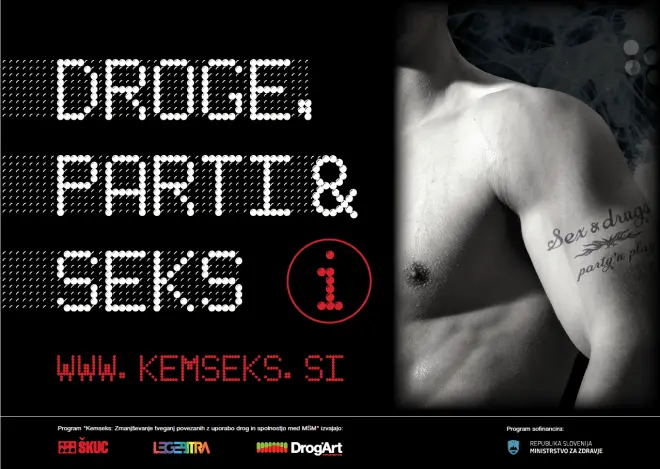
Poster: drogart.org
Harm reduction and drug testing
Drogart is an organization that aims to minimise harm on the party scene, and offers drug-testing services and reports on their webpage. It’s in Slovene, but you can Google translate it or work things out yourself, and our story on the group is here. One thing they recently warned of were pink Pharaoh pills with around twice the normal MDMA content (measured at 261 mg). See pictures and learn more here, but do remember that all the usual drugs remain illegal in Slovenia, while our in-depth profile of the group is here. We've also heard reports - albeit anecdotal - of women's drinks being spiked in the city, so take care and let friends know where you're going and, as ever, avoid unknown powders of questionable content and dose.
Some fun facts about the city and its castle...
Enhance your stay in the city and impress or annoy your friends and companions by learning some obscure facts about the city here, and the castle here.
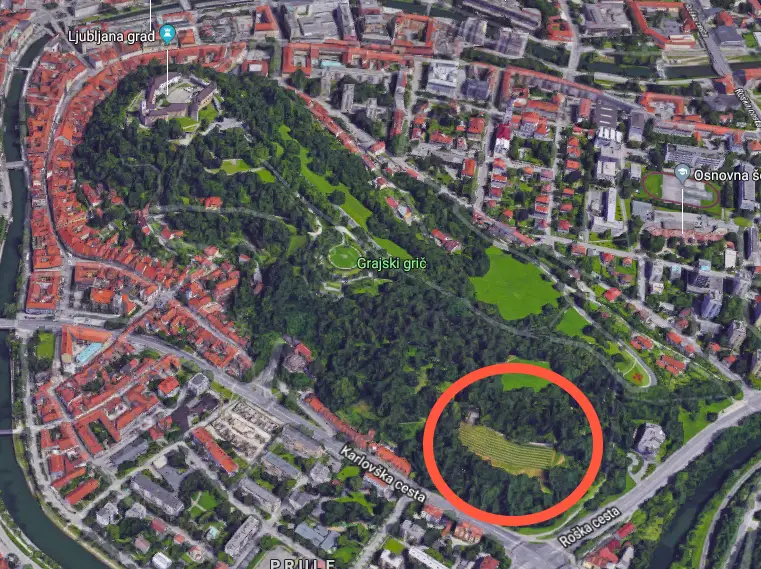
The Castle has its own vineyard at the other end of the hill, as well as a cutting from Maribor's "World's Oldest Vine" growing in the courtyard. Screenshot: Google Maps
Photo: JL Flanner
Things to do with children in Ljubljana
You can find our Top 12 list of things to do with kids in Ljubljana here. If want to read more about the philosophy behind the wonderful House of Experiments look here, while our trip to the Museum of Illusions is documented here, and there’s always riverside walks, ice cream and pizza.
Open-air ice skating can be found in Tivoli Park until March 10, 2019, with the details here.
Mini Teater Ljubljana – There's always an interesting and varied range of shows on for both adults and families at this theatre not far from Križanke. The English schedule for the month is here.
Ljubljana Puppet Theatre - The puppet theatre near the Central Market and next to the Castle funicular has a full programme or shows, for children and adults, with the schedule here.
Live music in Ljubljana
Cankerjev dom – Thursday, 19:30, Rinnat Moriah, soprano, and Jean-Frédéric Neuburger, piano, will perform under the baton of German pianist and conductor Michael Wendeberg, featuring Richard Strauss, A Hero's Life.
Klub Gromka – You can enjoy some European free jazz in Metelkova from 19:00 to 02:00 on Thursday, with performances from Frame Trio, Olfamoštvo, and Abstract Truth. Then Friday the 11th there’s live grindcore with Ritval VI - Glista, Trobec, and Alberto Tomba.
Ljubljana Castle – Friday night is jazz night at the Castle, and this Friday, 21:00, you can enjoy the live sounds of Papir, as seen below.
Pinelina dnevna soba – Friday evening, 20:00 to 23:00, you can enjoy live music from Mónika Lakatos, being promoted as follows: “Passionate, tragic, painful, life-affirming music of Hungarian Roma singer Mónika Lakatos accompanied by a guitarist Mihály “Mazsi” Rostás in intimate atmosphere of the Pinelina dnevna soba.”
LGBT+ Ljubljana
If you want to learn more about Ljubljana Pride, then take a look at our interview with its president here. If you're looking for more general links on "gay Slovenia", including a history of the scene and various projects, then you can find that here, while our stories about the community can be found here.
Klub Monokel – This lesbian bar in Metelkova is open every Friday. Nthing else is planned for this week, but take a look below.
Klub Tiffany – Te gay bar next door is also open on Fridays, while every Monday until June 2019 there's tango at 18:00. This Saturday it also has LFU - Večer feministične, lezbične in kvir pornografije, “LFU invites you to a film projection and talk about feminist, lesbian, and porn pornography from contemporary Berlin production. The event is open to lesbians, women and trans persons.” More details here.
Pritličje – This seems to be the only "always open" LGBT-friendly cafe / bar / events space in town, and perhaps the country, so it's a good thing it's such a good one, open from morning to night, and with fliers and posters letting you know what's happening outside the narrow confines of, say, a general interest online what's on... guide.
Museums and galleries in Ljubljana
Most public galleries and museums are closed on Mondays, although not the National Museum.
Plečnik's desk. Photo: JL Flanner
Plečnik’s House is worth a visit if you want to learn more about the architect who gave Ljubljana much of its character. Read about our guided tour here. Something on for a limited time is Plečnik and the Sacred, showing here until January 20, 2019.
Cankerjev dom – Running until the end of February 2019 is an exhibition titled Ivan Cankar and Europe: Between Shakespeare and Kafka. This is “An examination of Cankar’s art through an analysis of influences and interpretations, and juxtaposition with contemporary European writers. The visually elaborate architectural and graphic layout, supported by audio-visual media, installation art and diverse visual highlights, offers a vivid account of Cankar’s excellence, his comprehensively exquisite aesthetic and artistic vision.”
City Art Gallery – Drago Tršar recently had a show at the main Moderna looking at his monumental works, and now this smaller gallery in the Old Town, not far from Town Hall, is showing some the sculpture’s erotic works, on until January 20, 2019. It’s being promoted with the following example, and is quite explicit in terms of breasts and vaginas, but if that's OK for you and your companions then there's much to enjoy in the paintings, bronzes and ceramics on show. You can read about my visit, and see a lot more pictures, here.
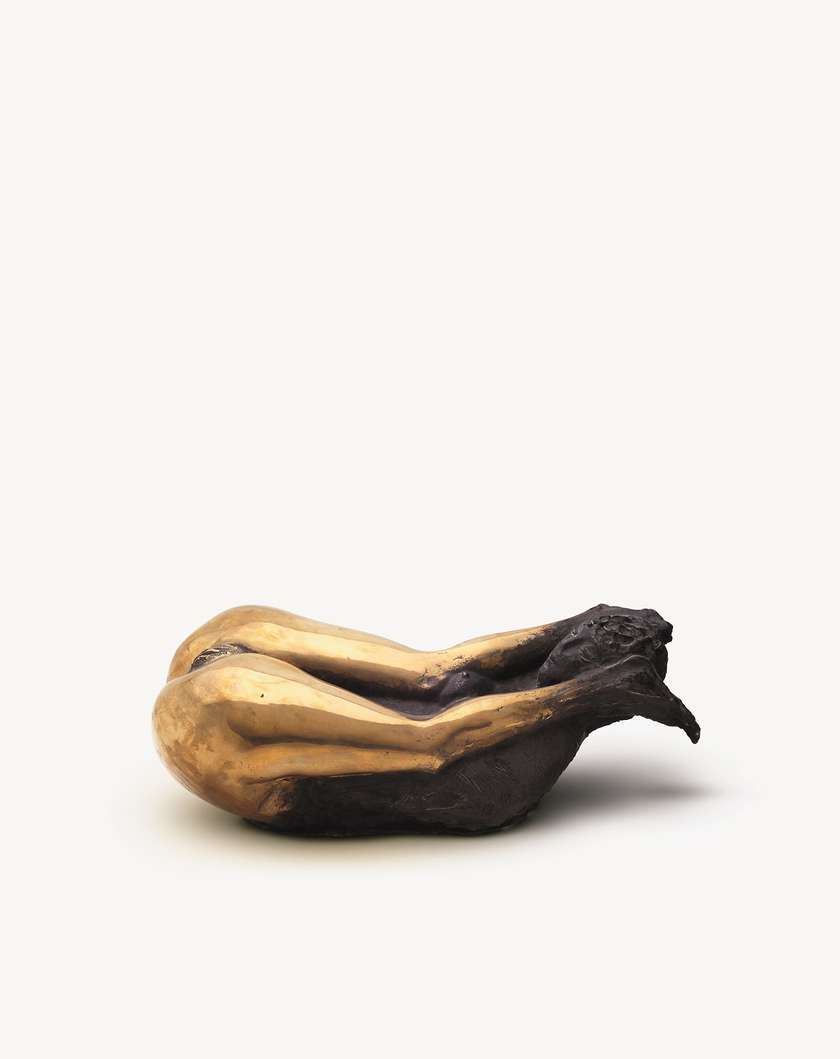
City Museum – The Museum in French Revolution Square has an exhibition on the writer Ivan Cankar that’s on until the end of February 2019, with pictures, books and manuscripts, all presented in Slovene and English. It also has a very interesting permanent exhibition on the history of Ljubljana, from prehistoric times to the present day, with many artefacts, models and so on that bring the story alive.You can read about my visit here. Until March 2019 there's a show highlighting the work Elza Kastl Obereigner (1884-1973), a pioneer Slovenian sculptress, with an example of her work shown below.
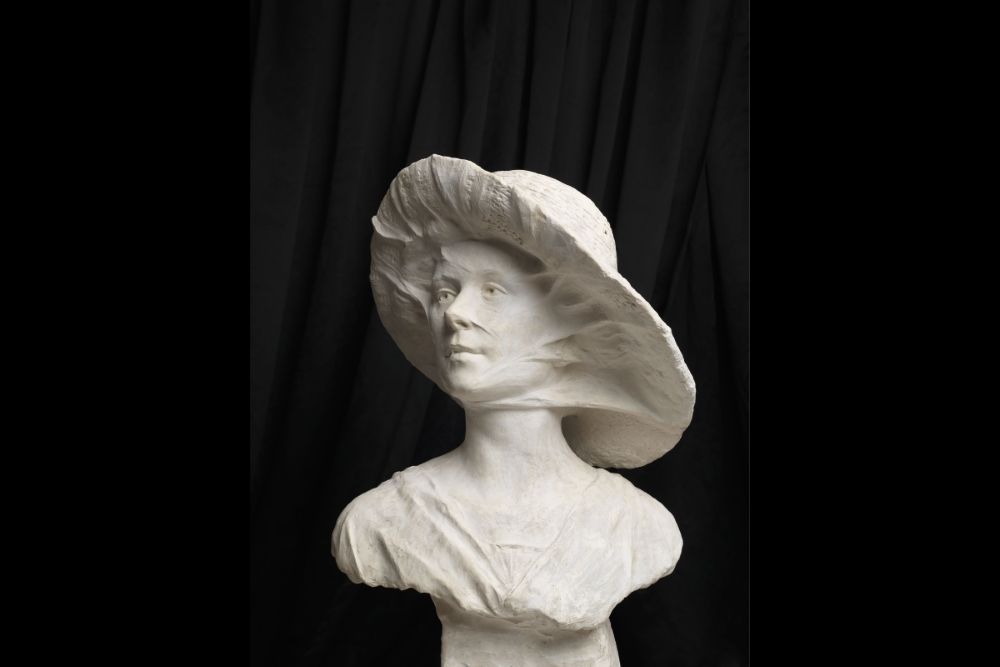
Photo: M Paternoster
The Faces of Ljubljana in the City Museum. Photo: JL Flanner
Galerija Jakopič – On until March 3 is Over My Eyes (Na moje oči), an exhibition of photographs from Iraq taken by Iraqi photographers.
Kino ŠiškaKino Šiška – A show on Contemporary Graphic Arts, with the focus on printing, is running here until January 21, as well as various other exhibitions.
International Centre of Graphic Arts – Running from Friday until March 3 2019 there will be a show of posters from Milton Glaser, while until March 3 2019 you can enjoy paintings, drawings, prints and murals from Nathalie Du Pasquier in a show called Fair Game. The latter is being promoted with the following image.
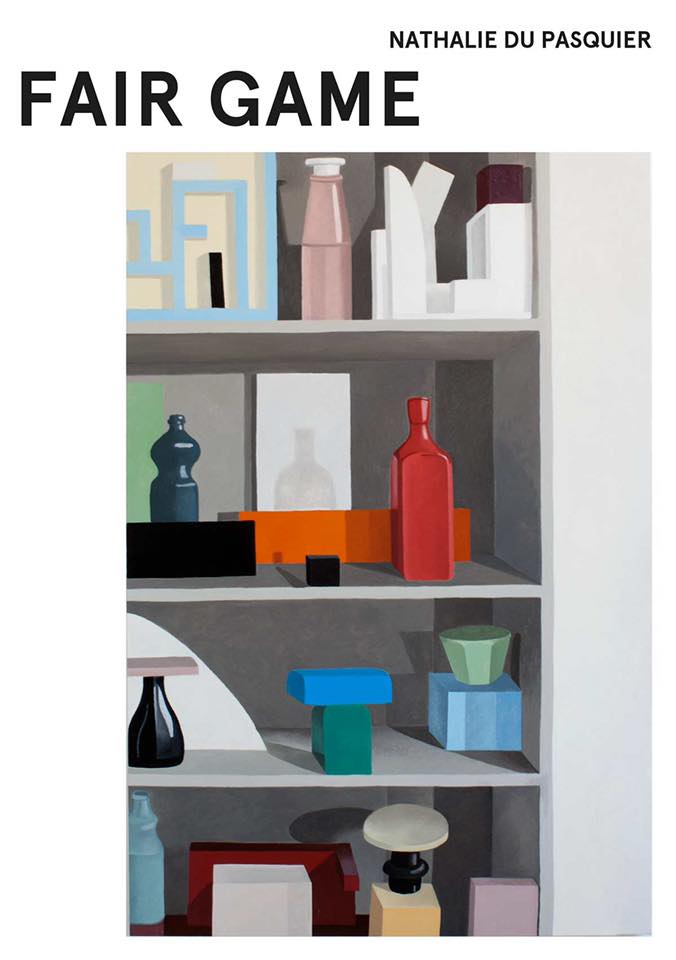
Ljubljana Exhibition & Convention Centre – Just outside the centre of town, at Dunajska cesta 18, you can see a lot of plasticized bodies at the Body Worlds Vital show, running from October 20 until January 20 2019.
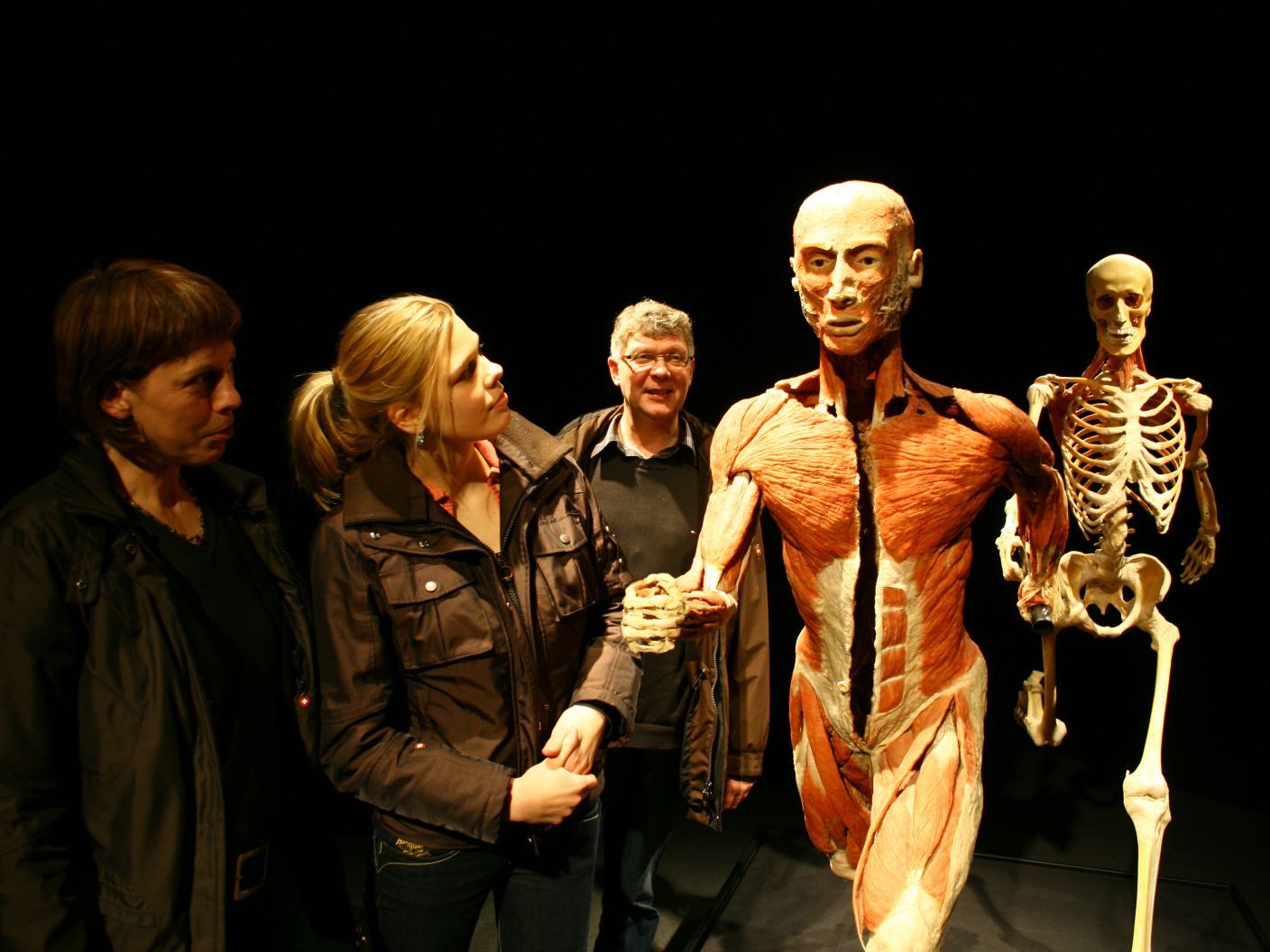
Photo: Body Works Vital
MAO – The Museum of Architecture and Design has much of what you'd expect, and until March 25, 2019, has a show on Ljubljana and it's relation with water. Until February 24 visitors can enjoy Toasted Furniture, which presents some experiments with the reuse of plastic waste, and until February 28 there's a show on Oskar Kogoj and his chairs.
Sam, 1966, fotografija na srebroželatinskem papirju. ©Stojan Kerbler
Moderna galerija – The main branch of this gallery, to be found near the entrance to Tivoli Park, has a good collection of modern art, as well a nice café in the basement, and it's latest exhibition focuses on the photographer Stojan Kerbler, which runs until January 13, 2019, and shows rural live in Slovenia for the recent past.
Museum of Contemporary History – The museum in Tivoli Park is showing, among other things, (R)evolution of the museum 1948-2018. 70 years of the Museum of Recent History of Slovenia.
National Gallery – The country’s main gallery has “the best” of what’s on offer from the Middle Ages to non-contemporary modern visual arts, and is in a great location for exploring other areas, just by Tivoli Park and opposite the main branch of the Moderna galerija. Running until February 10 2019 is a show called Ivana Kobilca (1861-1926): But Of Course, Painting Is Something Beautiful!, featuring works like the one below. You can read about our visit to the room containing sacred art from the Middle Ages here, and see a picture from our trip after the two girls.
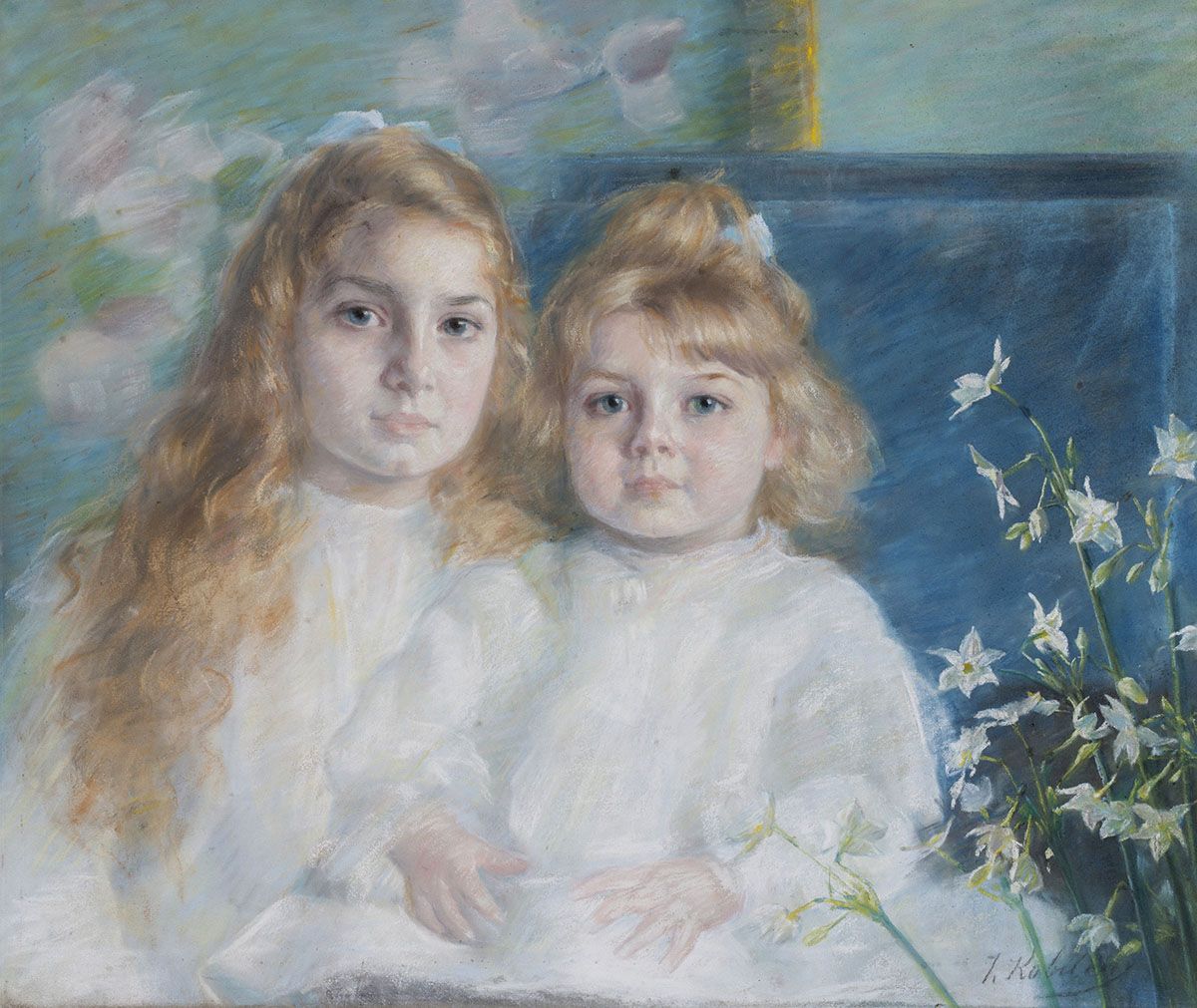
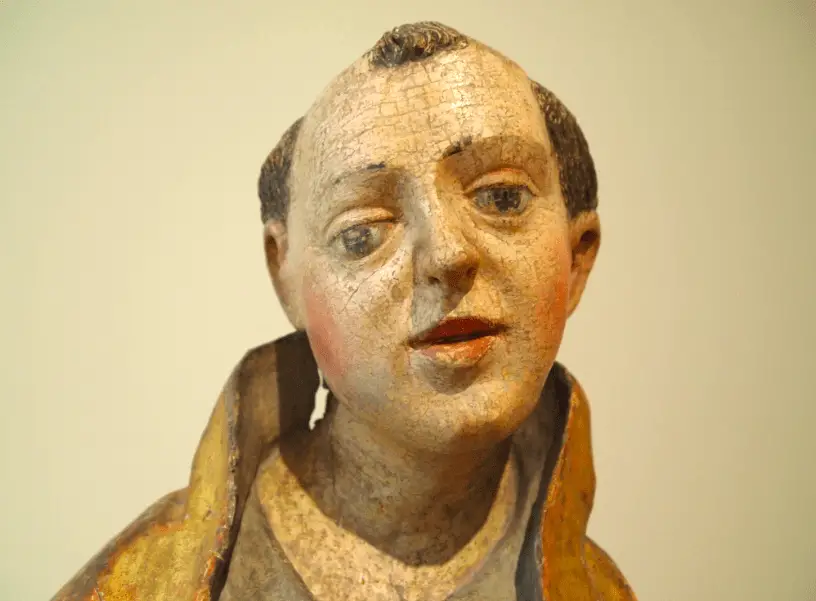
JL Flanner
National Museum of Slovenia – There’s plenty to see in the permanent collection here, from Roman times, Egypt and more, with the big draw this season being the exhibition of over 140 items of gold from Ming Dyntasy China, as reported here, and with an example below. This runs until February 15th.
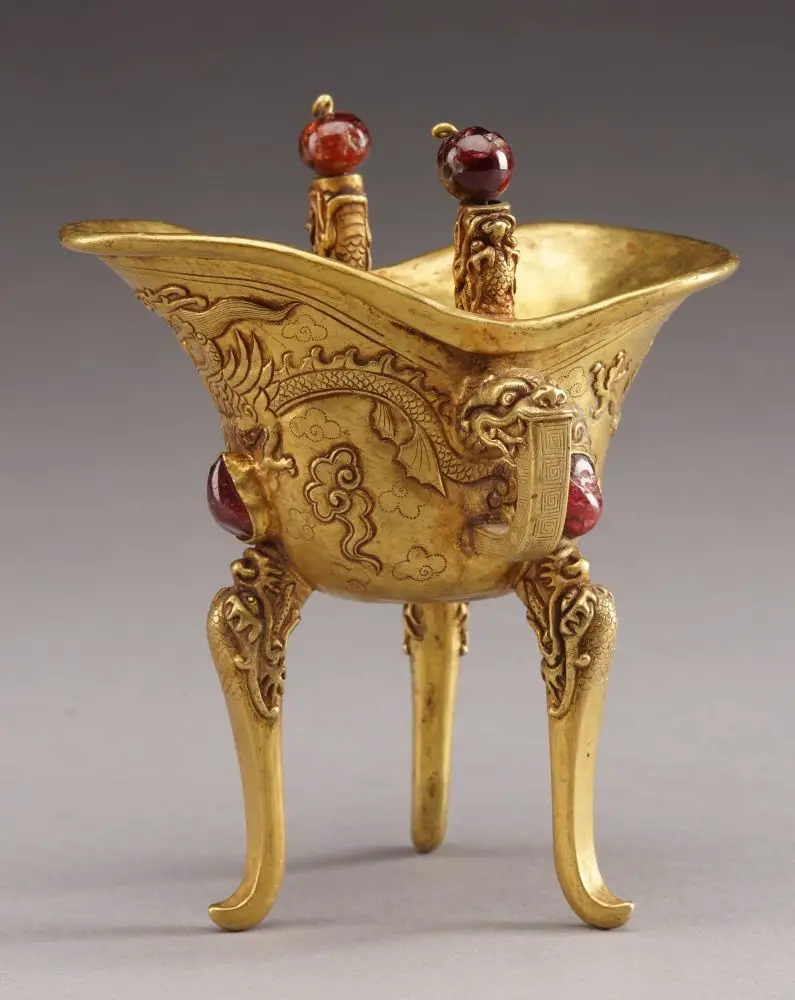
Photo: Wang Wei Chang
Meanwhile, the museum's Metelkova branch, located between one branch of the Moderna galerija and the Ethnographic Museum has some rooms on Church art, furniture and weapons, with the latter including more guns than you'll see anywhere else in town, and quite a thrill if coming from a nation where such objects are not household items.
Natural History Museum – On until the end of June 2019 is Our Little Big Sea, which takes a look at the oceans.
Škuc Gallery - You can find this in the old town, and until January 20 there;s an interesting and often moving show called Kids that you can see for just 1 euro, with works by Johanna Billing, Matic Brumen, Andreja Džakušič, Priscila Fernandes, Eden Mitsenmacher, Franc Purg, and Pilvi Takala.
Slovene Ethnographic Museum – The museum currently has a temporary show on Bees and Beekeeping, on until June 16 2019, as well two permanent exhibitions. One of these is called Between Nature and Culture, and has a great collection of objects from Slovenia and around the world, well worth the trip up to the third floor to see it (as recounted here). This place is located near the newer branch of the Moderna galerija and Metelkova.
Union is "the Ljubljana beer", but now both it and Laško are owned by Heineken. There are many local brews on offer around town, though, if you want to explore IPAs, stouts, wheatbeers, sours and so on Photo: JL Flanner
Union Experience – The Ljubljana-based brewer has a museum showing the history of the company, with the ticket also including access to part of the factory and a few samples of the product. You can read about our visit here.
It's not a formal museum, but if you're interested in "Yugo-stalgia" then you'll enjoy a trip to Verba, a small, privately run space that's crammed with objects and pop culture items from the era, and is conveniently located at the start of one of the short walks to the castle. It's also a great place to take pictures, if you leave a donation, and you can read more about it here.
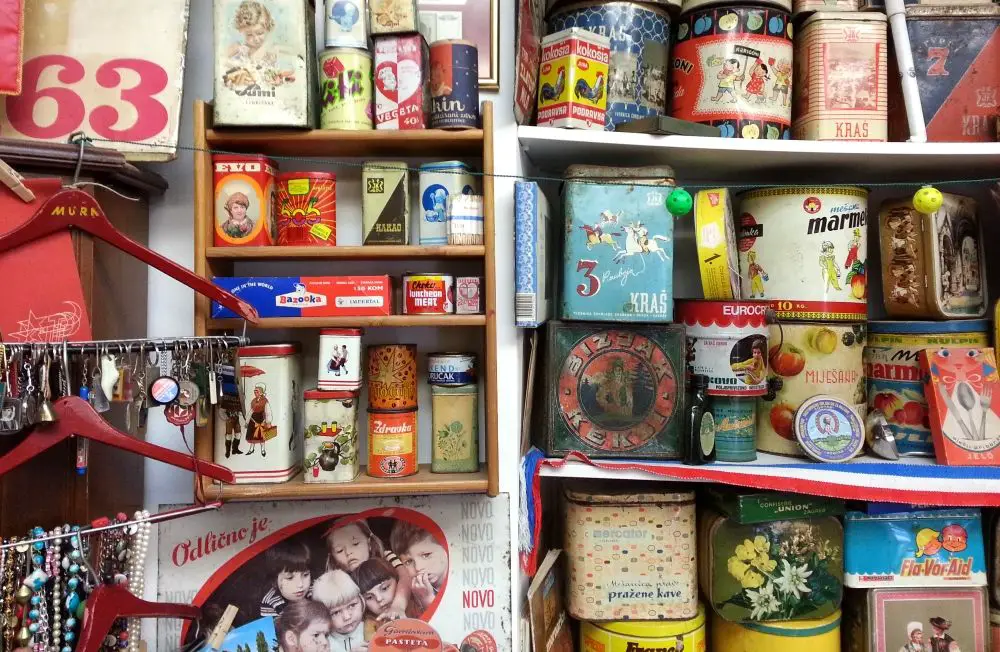
Verba. Photo: JL Flanner
Alternative Ljubljana isn't a museum or gallery, as such, but instead turns the city streets into a museum and gallery. Learn more about their tours of street art, history and LGBT Ljubljana here.
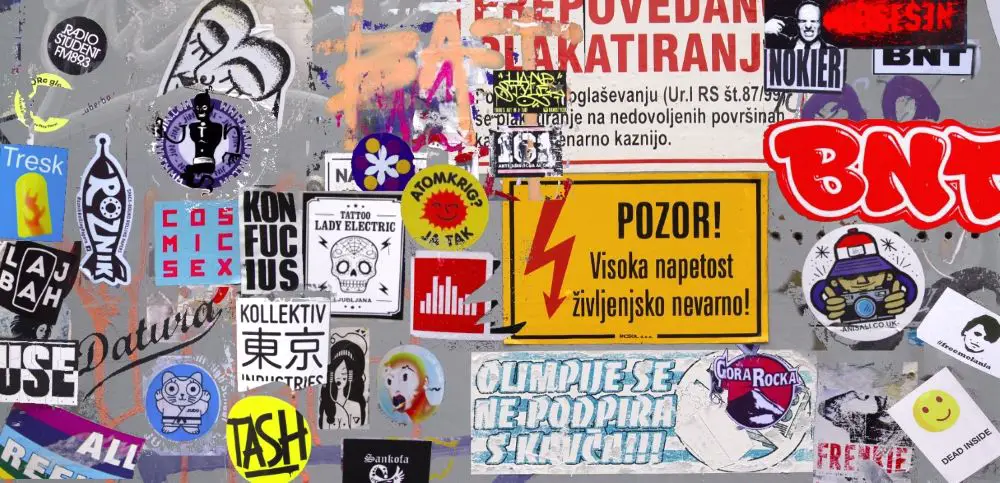
Photo: JL Flanner
Opera, theatre and dance in Ljubljana
Cankerjev dom – Thursday, 19:30, Rinnat Moriah, soprano, and Jean-Frédéric Neuburger, piano, will perform under the baton of German pianist and conductor Michael Wendeberg, featuring Richard Strauss, A Hero's Life.
Gledališče IGLU - IGLU Theatre – Saturday night this group is usually putting on an English improv show somewhere in town, but it’s generally promoted after this is written, so check the Facebook before putting on your shoes.
SNG Opera and Ballet – There’s nothing on here this week.
Slovenska filharmonija – This orchestra is playing at Cankerjev dom, see above.
Other things to do in Ljubljana...
If you'd like to spend an evening painting with others, then take a look at Design with Wine, which organises painting parties on Trubarjeva cesta,
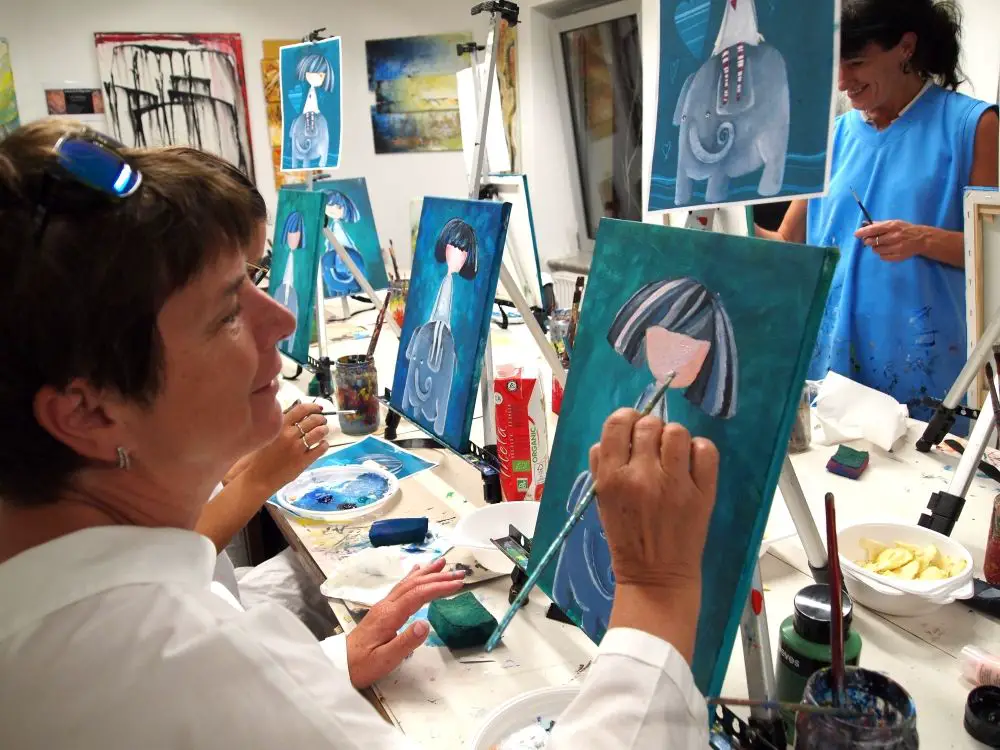
If you want to see some antiques, then check out the wonderful Antika Carniola, as discussed here. The man behind it, Jaka Prijatelj, has a fine eye for life on this street, as you can see on his Facebook account.
Photo: JL Flanner
If you’re in town and want to go jogging or walking in nature, why not take another look at the Castle, with a brief guide to the trails here. If you want something bigger, head to Tivoli Park.
And if you're bored with the Old Town, why not take a walk, cycle or boat ride to nearby Špica and enjoy the riverside life. Learn more about that here.
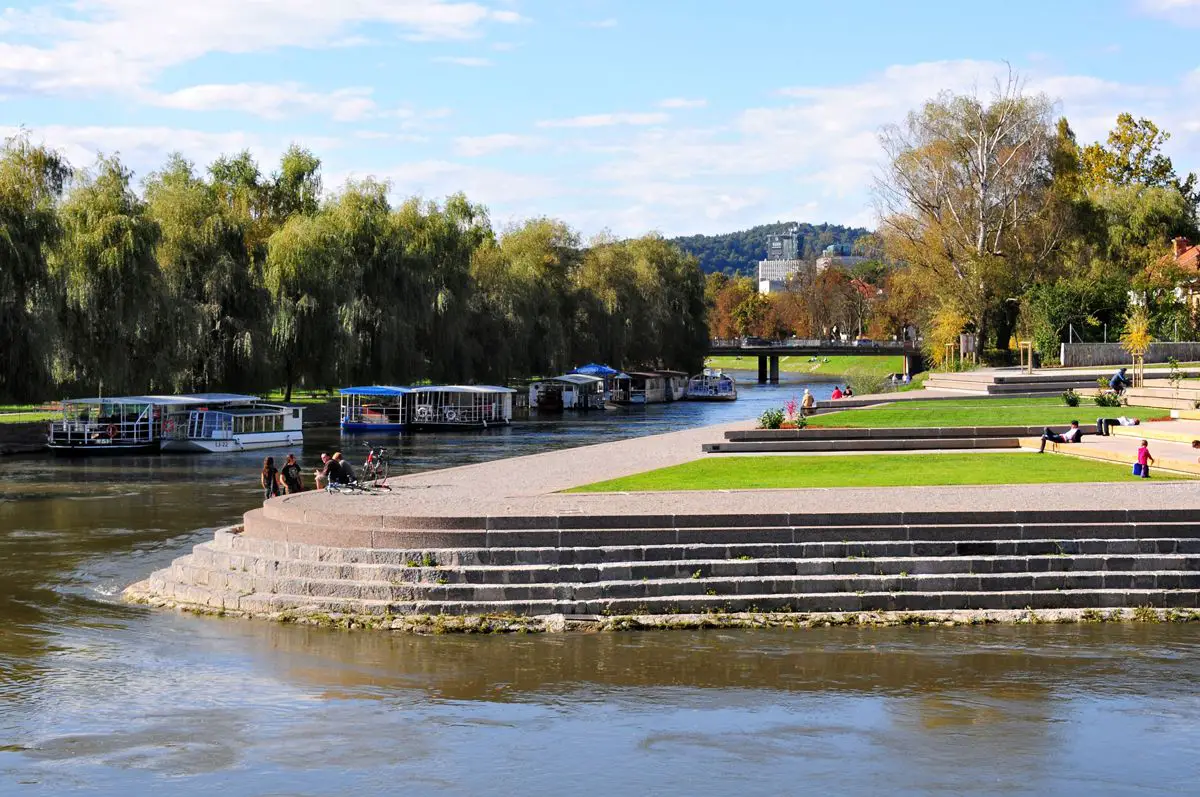
visitljubjana.si
![]()
maxpixel.net, public domain
Want to stretch and breath? Then check out our list of drop-in yoga classes for tourists, visitors and the uncommitted. If you're heading to the coast, check out our interview with a yoga teacher who offers breakfast sessions there, while if you're staying in town (or nearby) and want to try some "family yoga" then you can learn more about that here and maybe get your kids to calm down a moment or two.
There are some golf courses near Ljubljana, but even ones further away are not far, as seen in our list of all the golf courses in Slovenia. Note that these close when the snow starts, if it ever does this year, in which case you might be interested in what's new at Slovenia's ski resorts for 2019, as reported here.
![]()
Photo: maxpixel.net, public domain
Daytrips from Ljubljana
Most of Slovenia is only a few hours from Ljubljana, and you can easily visit Lake Bled, Lipica Stud Farm, Postojna Cave, Predjama Castle, the coast and other locations, while if you'd like to take a photo of from that bench in Bled, then you can learn how to get there here. If you’re looking for something more ambitious, then check out our recent guide to the 17 members of the Association of Historical Towns of Slovenia
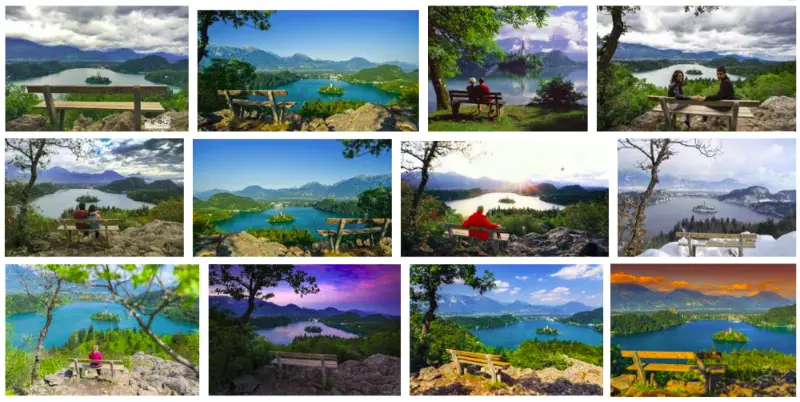
Photo: Google Image Search
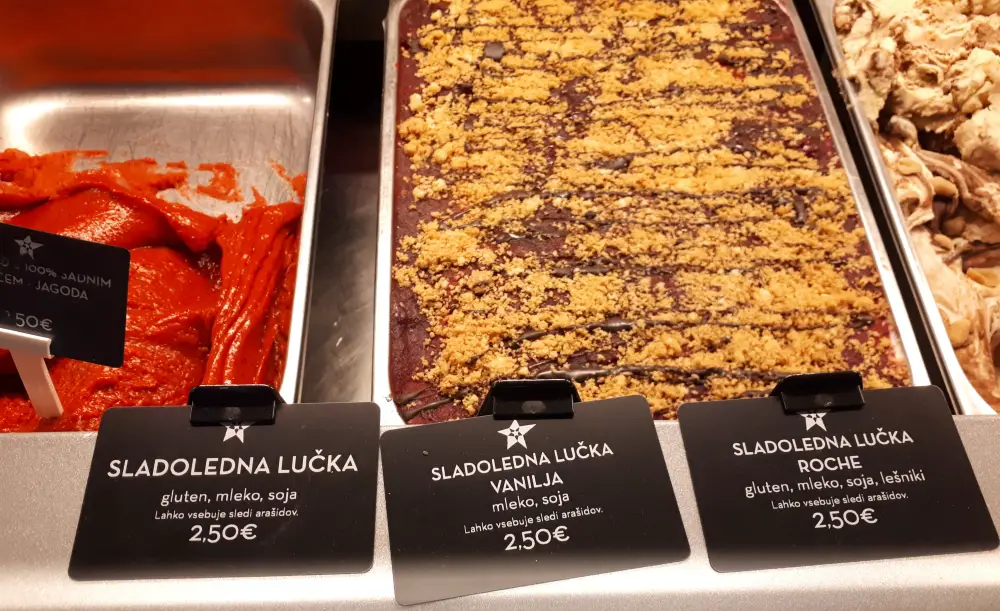
Zvezda. Photo: JL Flanner
Finally...eating ice cream in Ljubljana in winter
Only serious ice cream stores keep making and selling ice cream through the winter, so we took a look at six of the best in the pedestrianised area, with something for sophisticated tastes as well as those who like to pile on the candies, cookies, syrups and treats. Read all about it here.
STA, 4 January 2019 - A total of 19,123 births were given in Slovenian maternity wards in 2018, down from 19,706 in 2017, which is a 3% drop, according to unofficial figures released by the National Institute of Public Health (NIJZ). This means that the trend of falling recorded since 2011 continues.
The final number of children born in 2018 is not available yet, but given that an average 3% of newborns come from multiple pregnancies, the NIJZ believes almost 19,500 babies were born in Slovenia last year.
Since the NIJZ started gathering birth statistics in 1988, 2003 was the year when the fewest children were born in Slovenia - only 16,917.
Related: Slovenia’s aging population, in graphic form
The number of newborns was then increasing until 2010, when 22,002 babies were born, but the trend reversed in 2011, with the number of newborns dropping to 21,567.
However, the NIJZ says on its website that last year's drop was much bigger than those in the 2011-2017 period.
Meanwhile, the largest number of babies in the country with a two-million population in the past 30 years - as many as 26,442 - was born 1988.
The Canadian Jewish News has just published an article by Michael Fraiman looking at an often neglected story, but one that’s been gaining more attention in recent years, the history and present of Jews in Slovenia.
While Ljubljana has a historic Jewish Quarter in the Old Town (as marked by Židovska ulica (Jewish Street) and Židovska steza (Jewish Path)) – and the site of the Jewish Cultural Centre – it hasn’t has a large Jewish community for many years. Indeed, Jews were officially banned from the city in 1515, a restriction that stayed in place until 1867, with lingering anti-Semitism deterring new arrivals.
In the years before World War II there were thus less only around 1,500 people who self-identified as Jewish in the whole of Slovenia, and this community was then essentially destroyed with the murders that took place as part of the Holocaust.
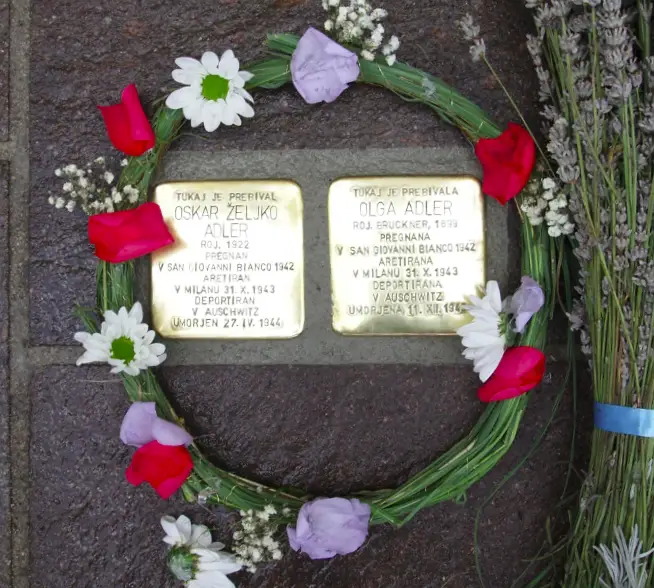
Two of the Stolpersteine. Photo: JL Flanner
It was only last year, 2018, that the Jewish community was symbolically welcomed back to Slovenia by President Borut Pahor as part of the events marking the laying of the first Stolerpsteine, a story you can read about here (along with a map of the stones’ locations). Two men who played key roles in that event were Robert Waltl and Rabbi Ariel Haddad, who are the subjects of The Canadian Jewish News story.
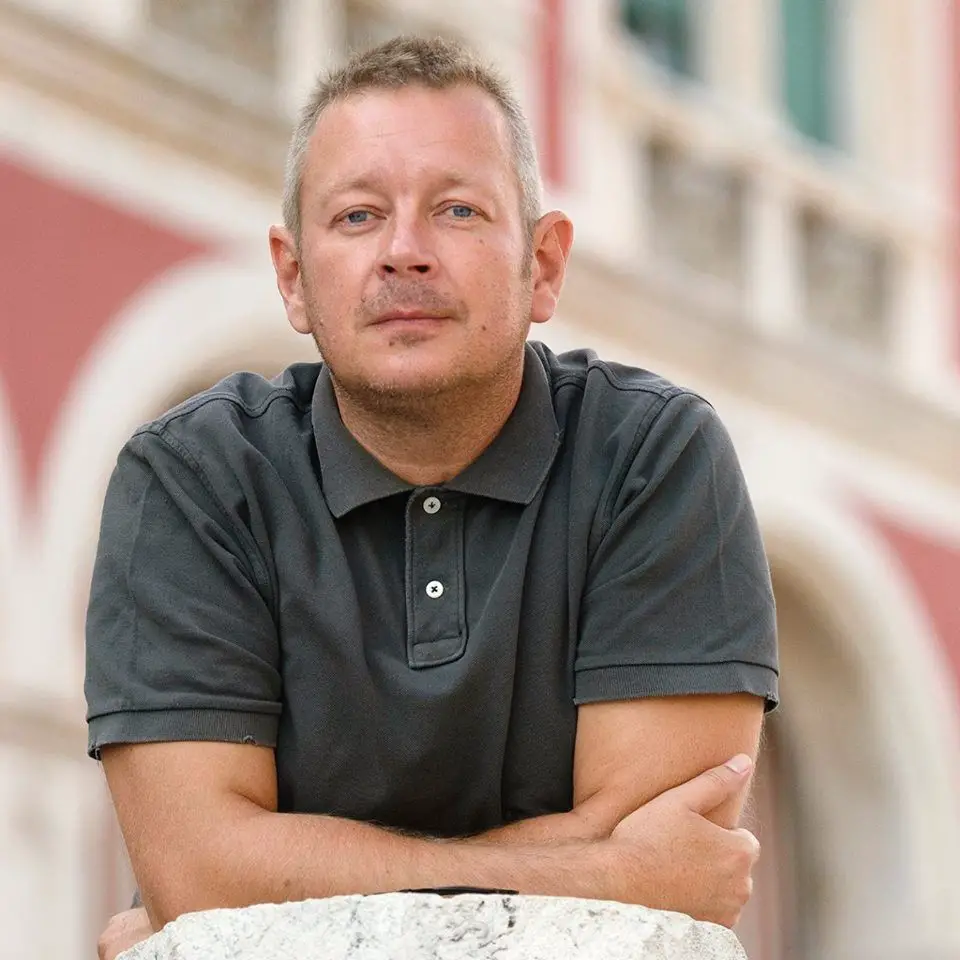
Robert Waltl. Photo: Mr Waltl's Facebook page
Mr Waltl is a familiar face to many, being a performer and theatre director, active in the cultural life of the city in the context of his Mini teater (sic), as well as putting in appearances as Dedek Mraz (Grandpa Frost) around the end of the year. But Waltl is also the man who runs the Jewish Cultural Centre (at Križevniška 3 SI-1000 Ljubljana – see the map at the end of this story). It’s here that you’ll find artworks and exhibits related to Jewish history in the country, including ones that mark the 587 Slovene Jews who died in the Holocaust.
Rabbi Ariel Haddad at the laying of the first Stolpersteine in Ljubljana. Photo: JL Flanner
The same building also houses the only working synagogue in Slovenia, and it’s here that Rabbi Ariel Haddad enters the picture. The Rome-born Rabbi lives in Trieste, about an hour from Ljubljana, but often visits the city in his capacity as Chief Rabbi of Slovenia. Rabbi Haddad’s connection with the Slovene capital started in 2000. He visited the city ahead of Passover and, since the local community lacked a Rabbi, he was invited to hold what was perhaps first seder of Pesach in Slovenia since the war.
A visit to the Jewish Cultural Centre
It’s an interesting story of a community returning to life after unimaginable pressures and suffering, and now slowly reclaiming its place at the heart of a city that has hopefully left behind the horrors of anti-Semitism, and is blossoming into a more tolerant and open society, and you can read more of it at The Canadian Jewish News.
You can learn more about the Jewish Cultural Centre and synagogue, in English, here, visit it at the location shown below, or follow its work on Facebook. The schedule for the nearby Mini Teater, with performances in all genres and for all ages, can be found here.
STA, 3 January 2019 - The Financial Administration (FURS) launched on Thursday a mobile app giving individuals access to all the services provided by the online system eTaxes.
Apart from providing access to all relevant forms, the app will also provide personalised functionalities such as a calendar and an alert system informing workers if their social contributions had not been paid.
The main objective of the app is to make it easier for individuals to cooperate with the tax authorities. The app will inform users when it is time to file certain forms or pay a certain tax.
Android users can download the app from Google Play and iOS users can get it in the App Store.
The Android app can be found here, while the Apple app is here
Until today, taxpayers could log on to eTaxes with their personal computers using a digital certificate. Existing users will now be able to access eTaxes through the app with their existing accounts.
Electronic tax filing has been available since 2003 and is currently used by 50,000 individuals as well as all companies in the country, as they are obligated by law to have an eTax account.
STA, 29 December 2019 - Art lovers will be in for an interesting year as Moderna Galerija, the national museum of modern art, brings some peculiar exhibitions in 2019, including one on visual art in the Kingdom of Yugoslavia and another on the Non-Aligned Movement.
The first exhibition will open on 31 January, featuring a review of Slovenian painters born in the 1970s and 1980s.
It will try to give an insight into what painting as a classic medium means today after it underwent some radical revaluation in the 20th century.
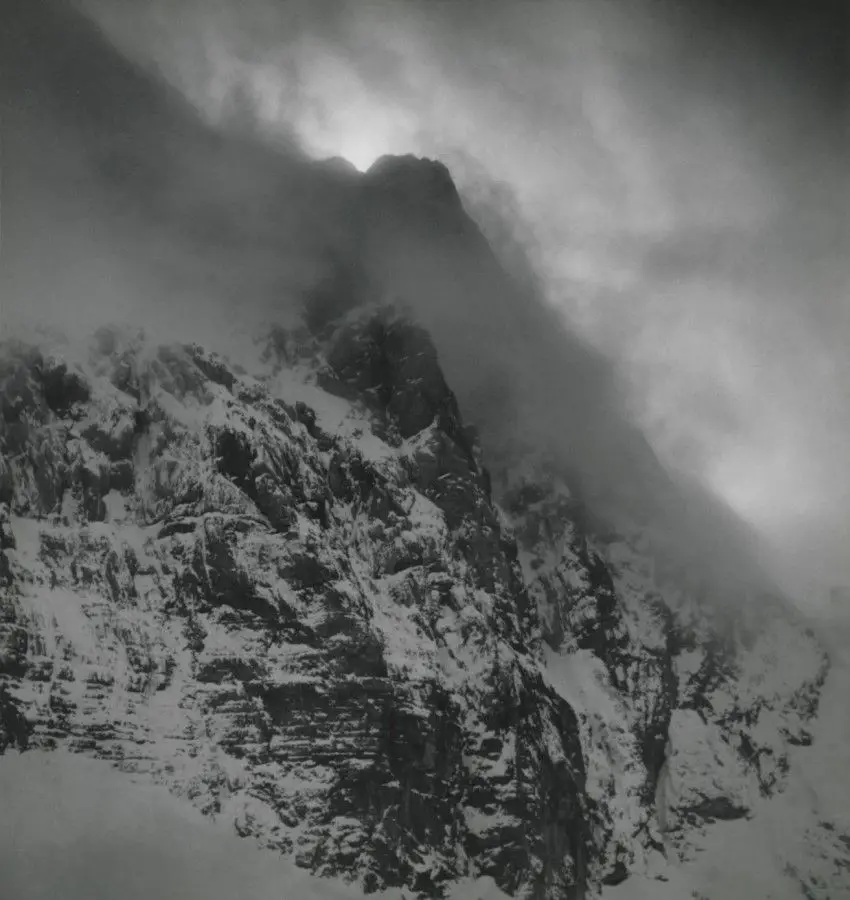
Slavko Smolej, The Triglav Northern Wall in the Mist, 1935, Moderna galerija
Visual art in the Kingdom of Yugoslavia (1929-1941) will open at the end of April, bringing works by leading artists from the region from the 1930s.
Paintings, statues, prints, drawings, photos and films for the exhibition will be contributed by more than 30 institutions from the region.
The recurring theme will be Yugoslavia as seen by Slovenian-US writer Louis Adamič in the travelogue from 1934 he wrote after visiting his homeland.
Related: Check out out weekly guides to what's on in Ljubljana here
For Adamič (1898-1951), the Yugoslavia of the 1930s was a marginal country of stark contrasts torn between pre-modern customs and capitalism which is nearing an end.
He also depicts it through his meetings with artists and writers such as sculptor Ivan Meštrović or writer Miroslav Krleža, and even King Aleksandar. (More details can be found here.)
The museum will also host the 9th Triennial of Contemporary Art - U3, which will run from 10 October to 2 February 2020.
It will be curated by Prague-based Vit Havranek, who has been project leader of the Tranzit initiative for contemporary art since 2002 and teaches at the Academy of Applied Arts in Prague.
A work by Zoran Mušič. Photo: JL Flanner
To mark the 80th anniversary of the outbreak of WWII, the museum will pay tribute to Slovenian painter Zoran Mušič (1909-2005) in September.
His works from the series We Are Not the Last from the 1970s will be put on show together with the drawings he made in the Dachau concentration camp which were discovered in Italy in 2016.
Meanwhile, the Metelkova Museum of Contemporary Art, Moderna Galerija's contemporary art arm, will launch the show Southern Constellations: The Poetics of the Non-Aligned in March.
Curated by Bojana Piškur, the exhibition will highlight the ideas, ideals and principles of the movement, particularly in close connection with its cultural policies.
The museum says the exhibition should not be considered a kind of exoticism or nostalgia for the movement.
Instead, it will try to place these policies in a contemporary context of the global economic, political and cultural system. More details on this show can can be found here, while the gallery's two locations are shown below.


